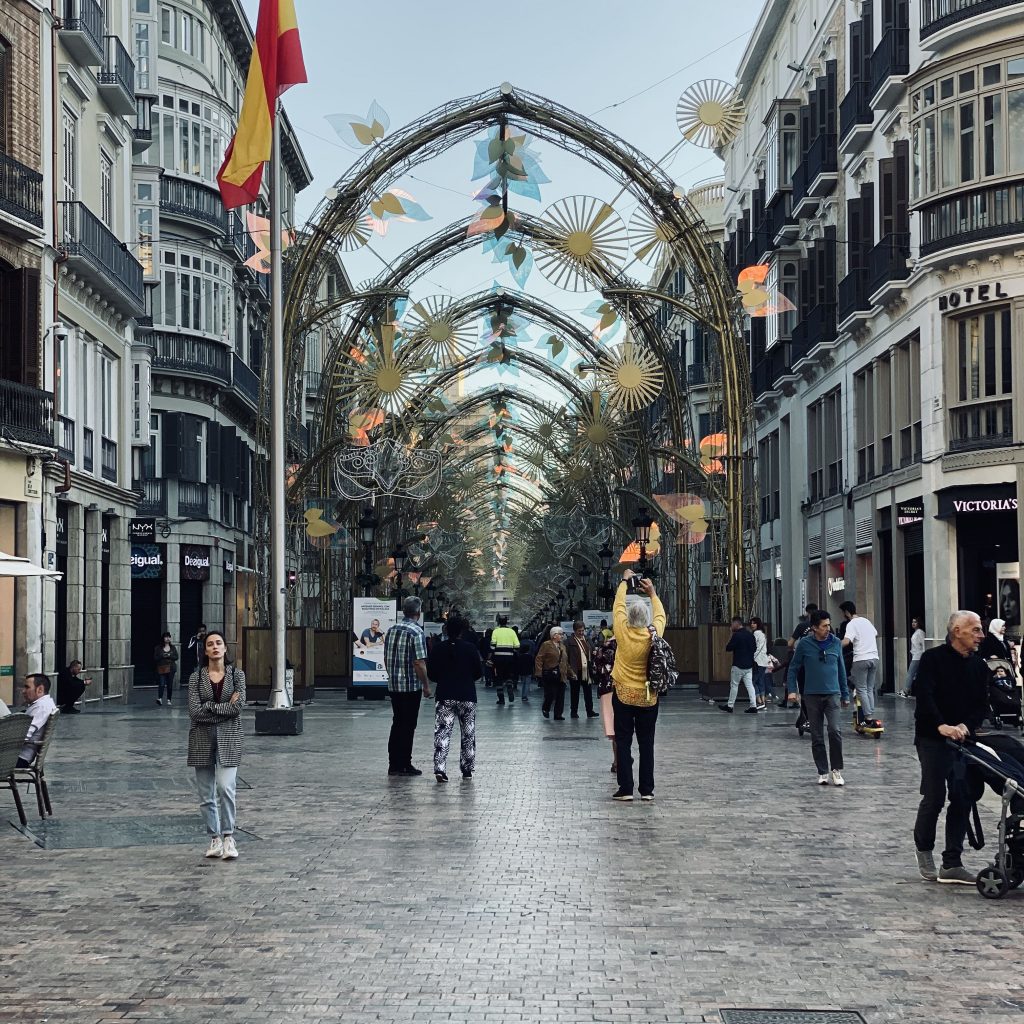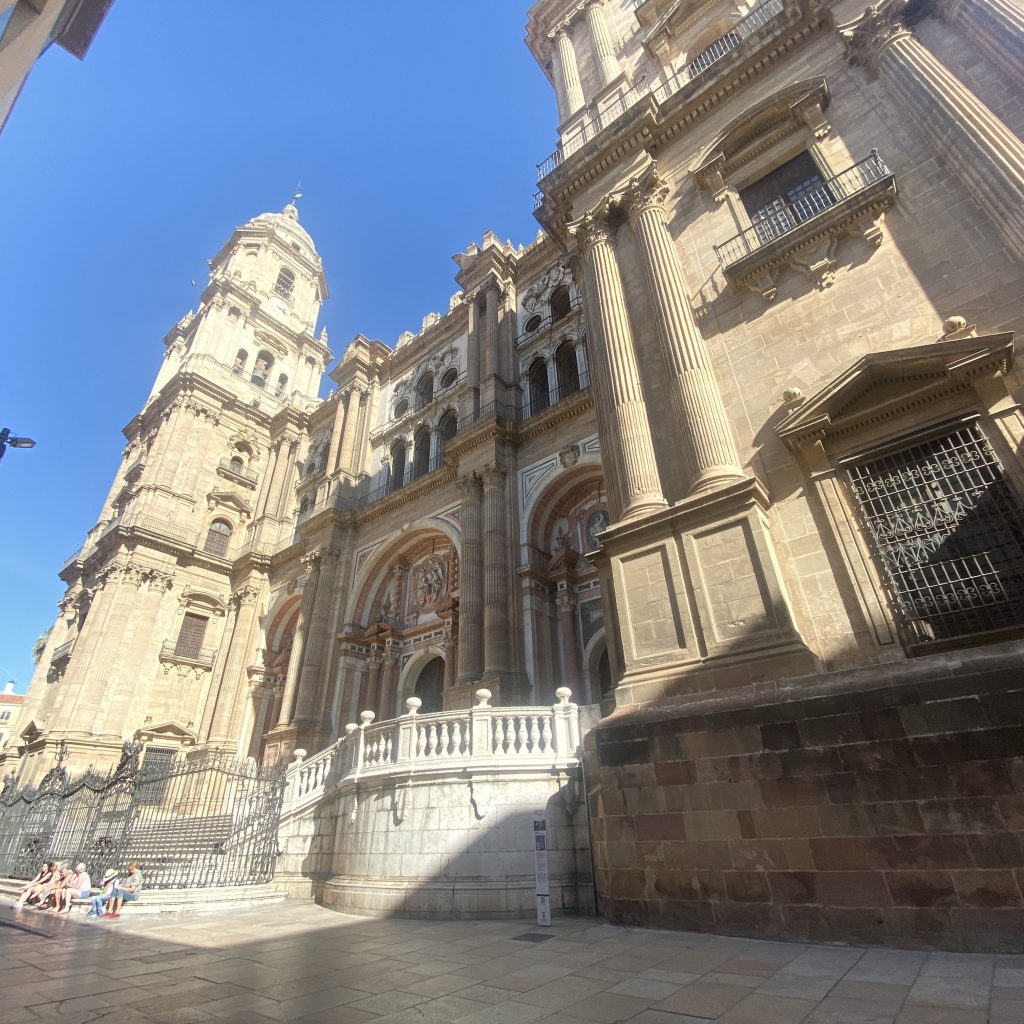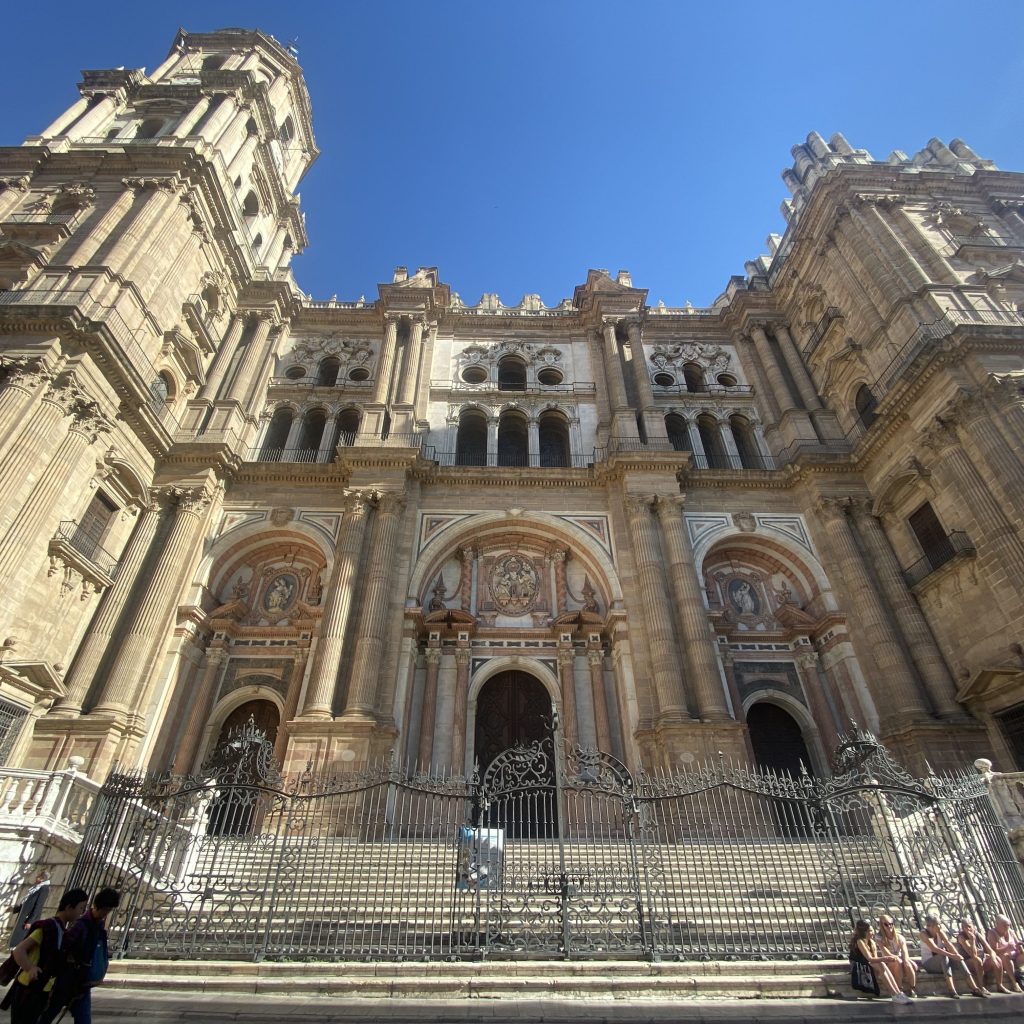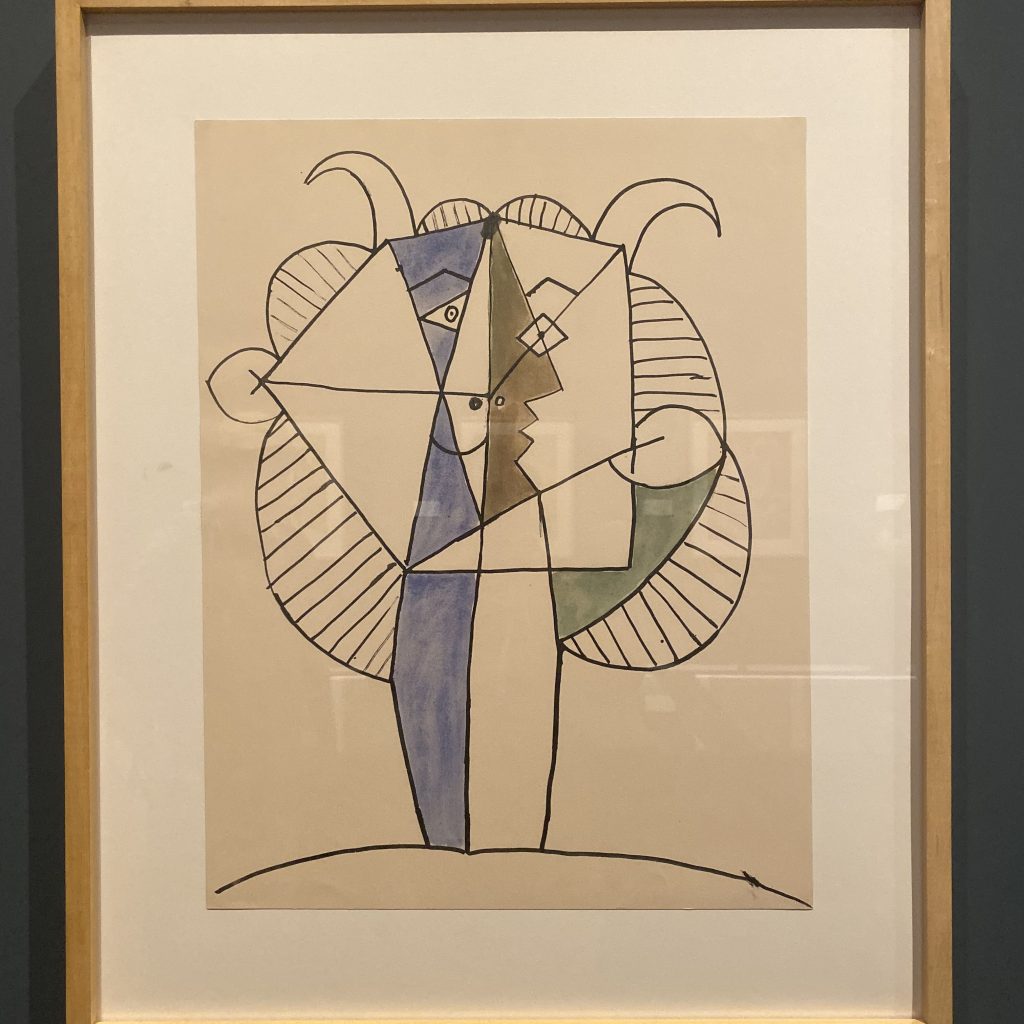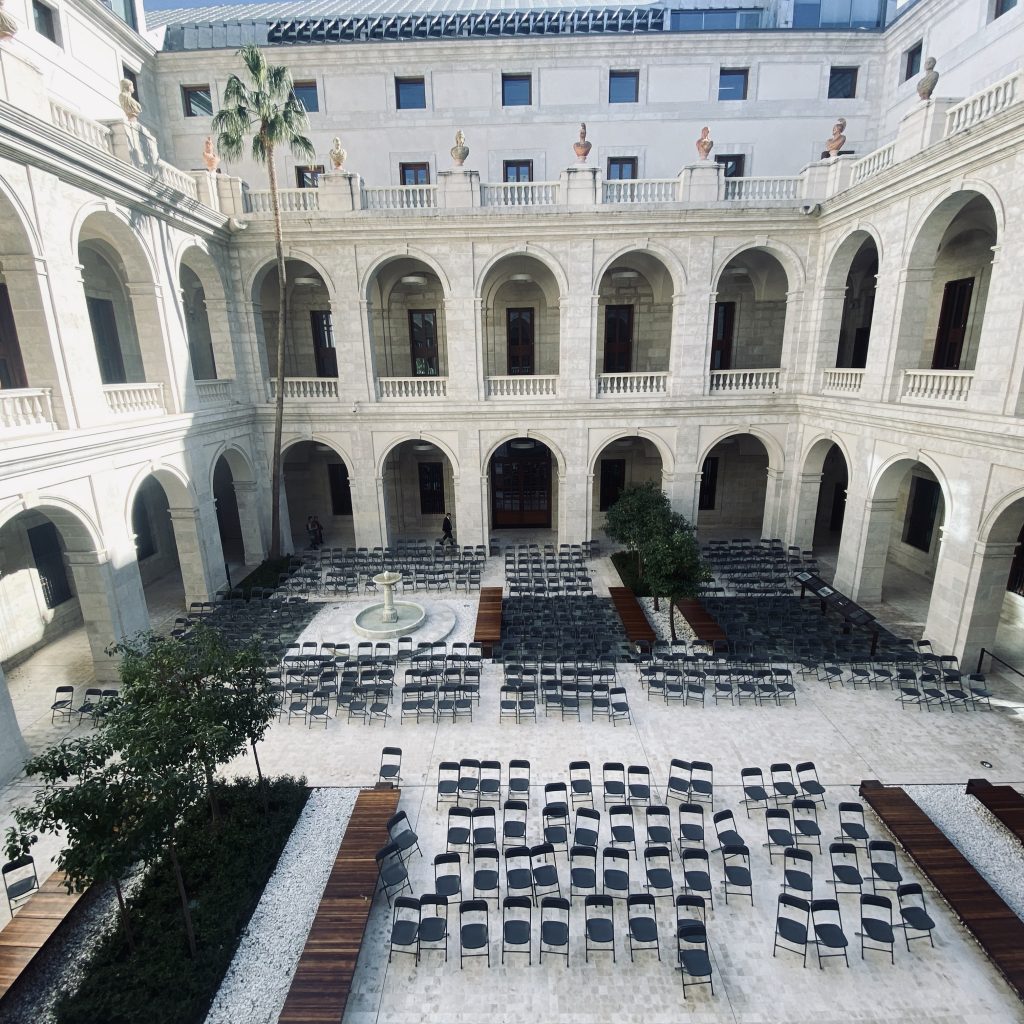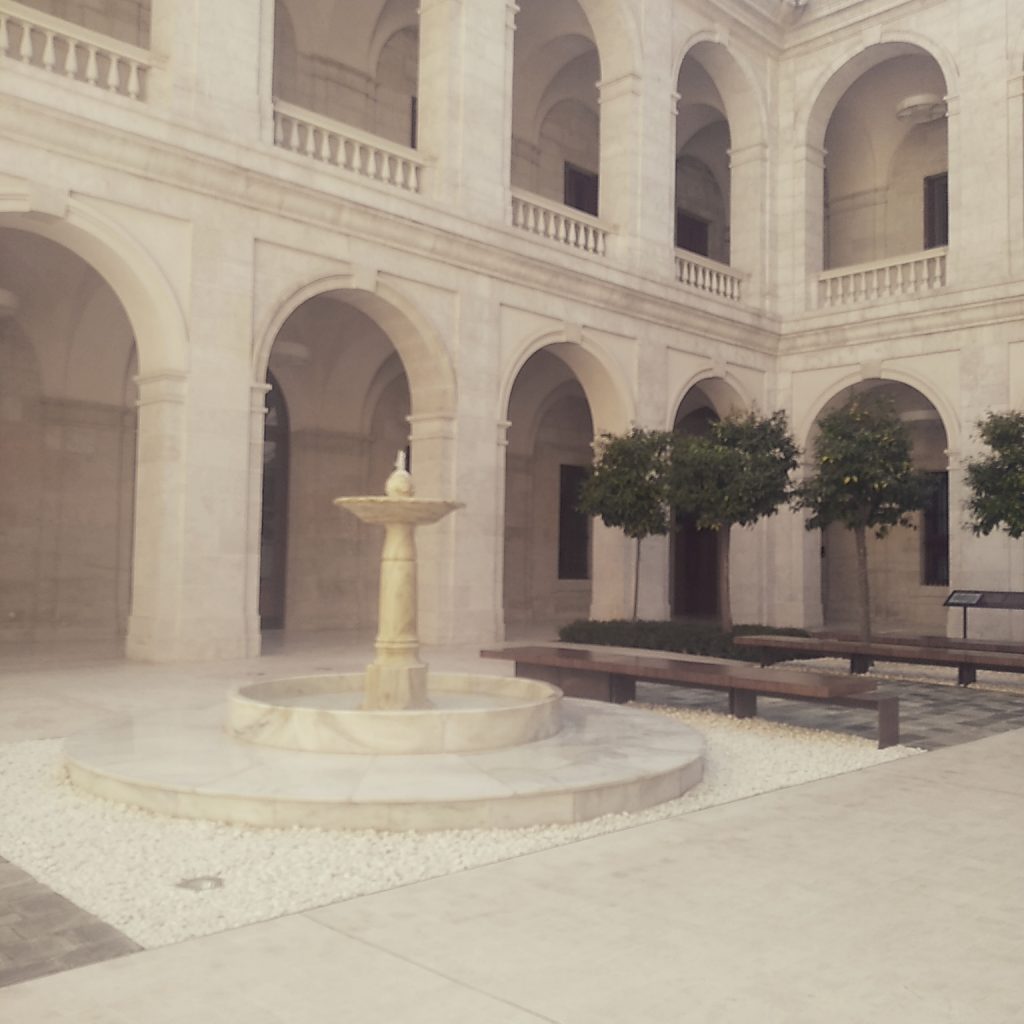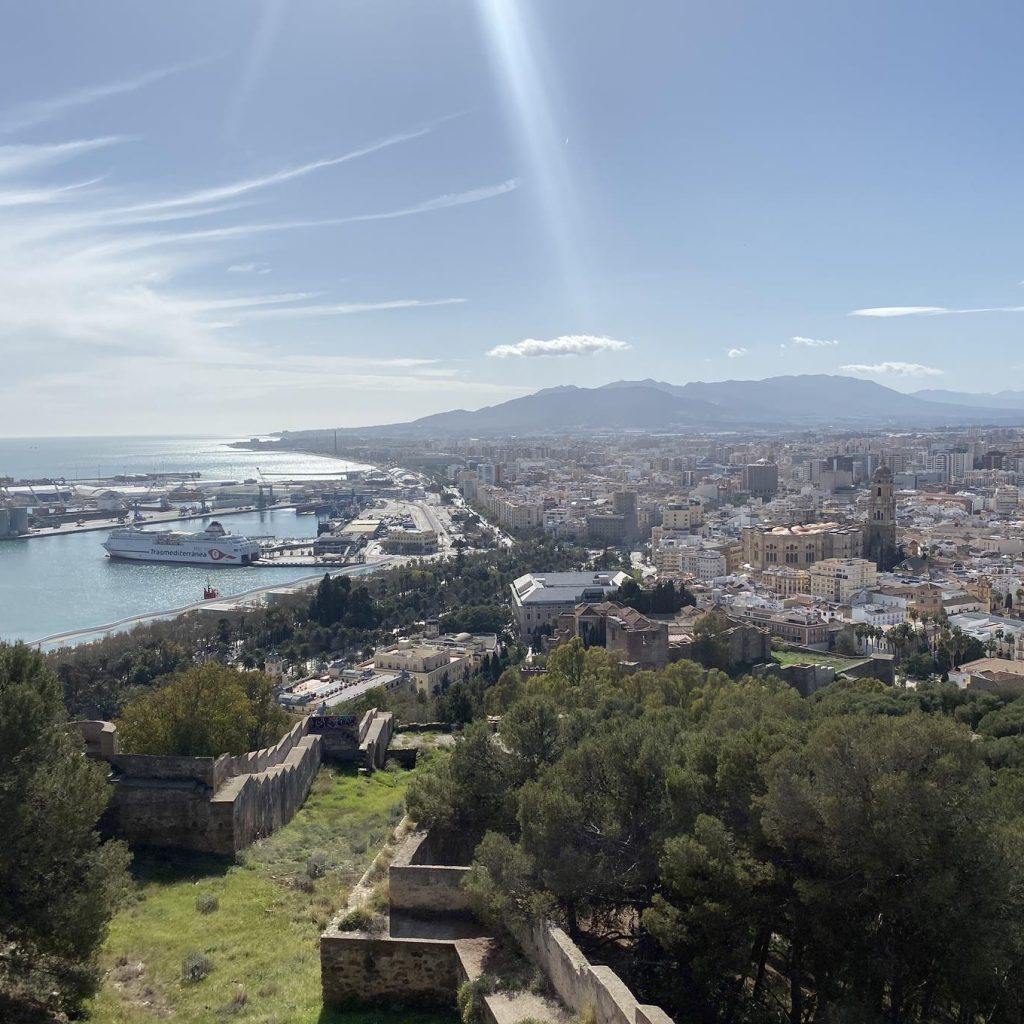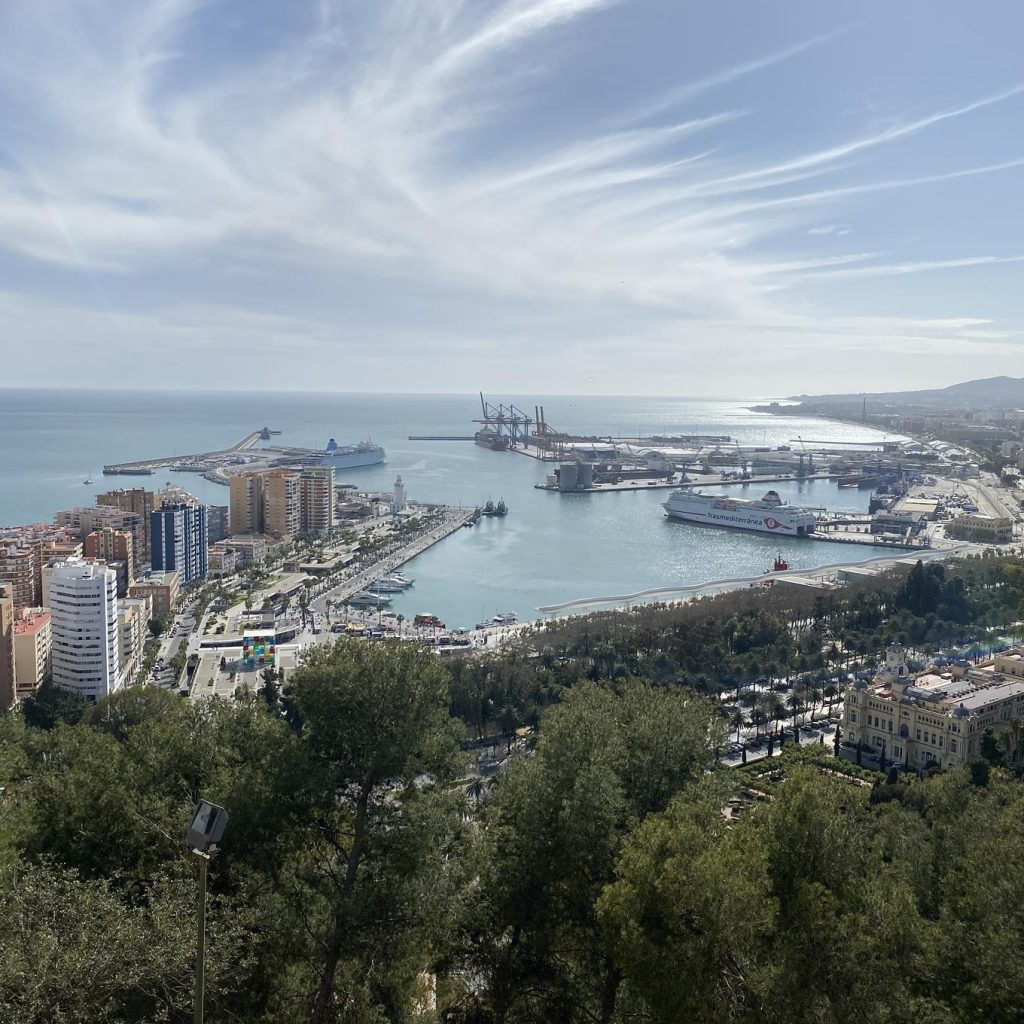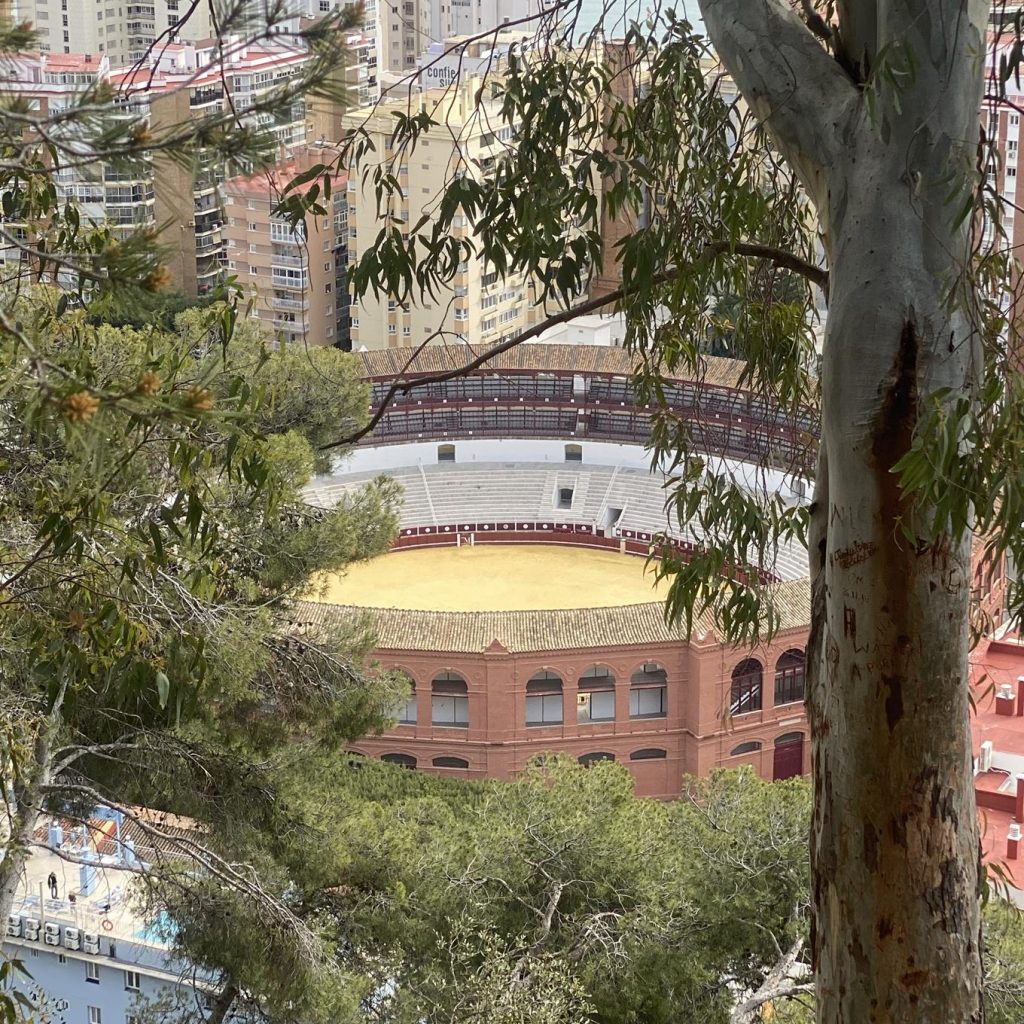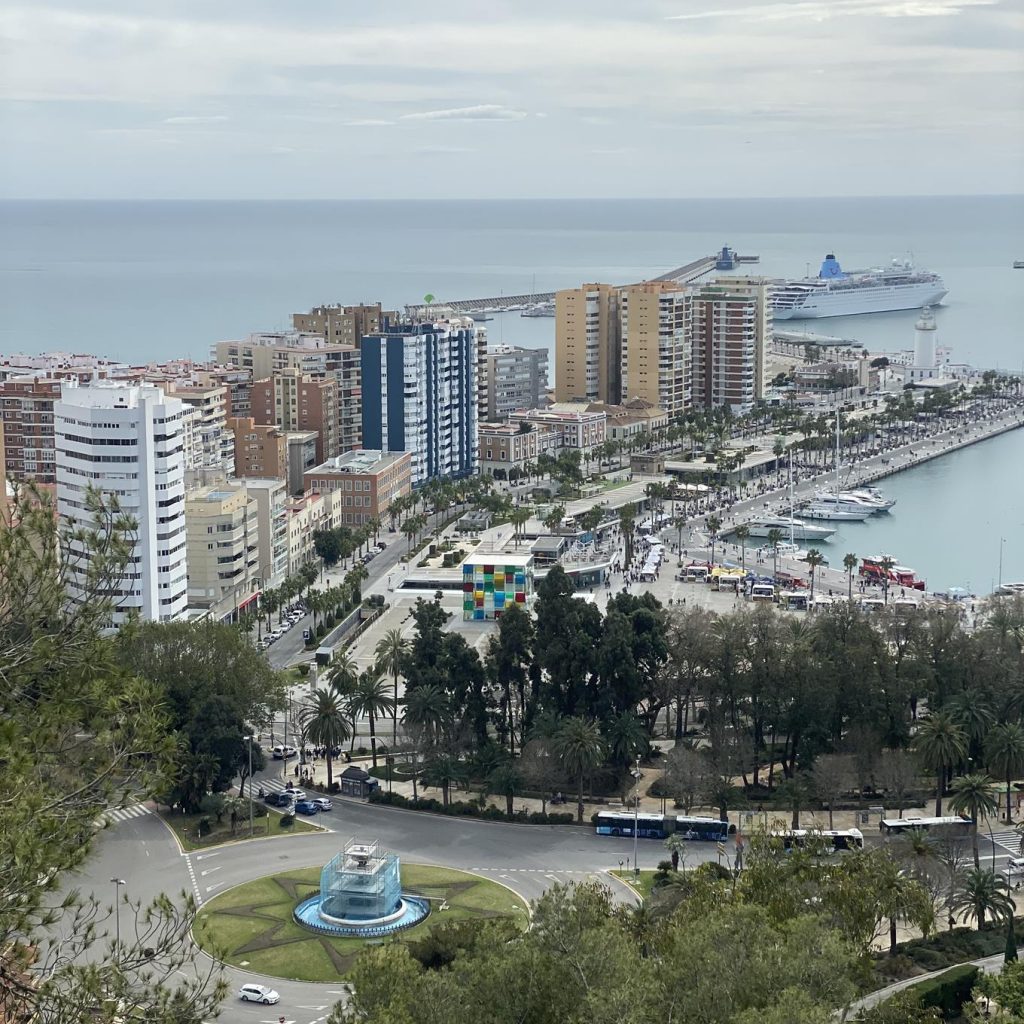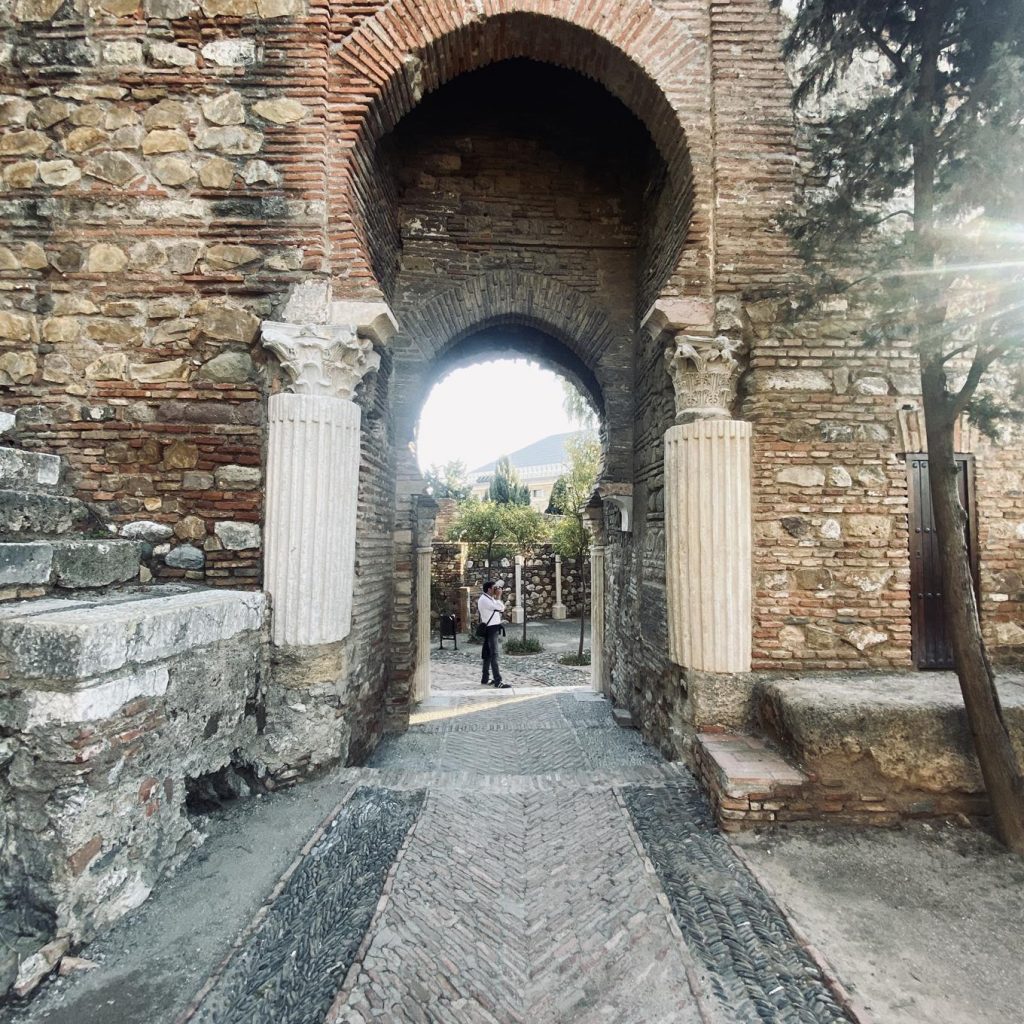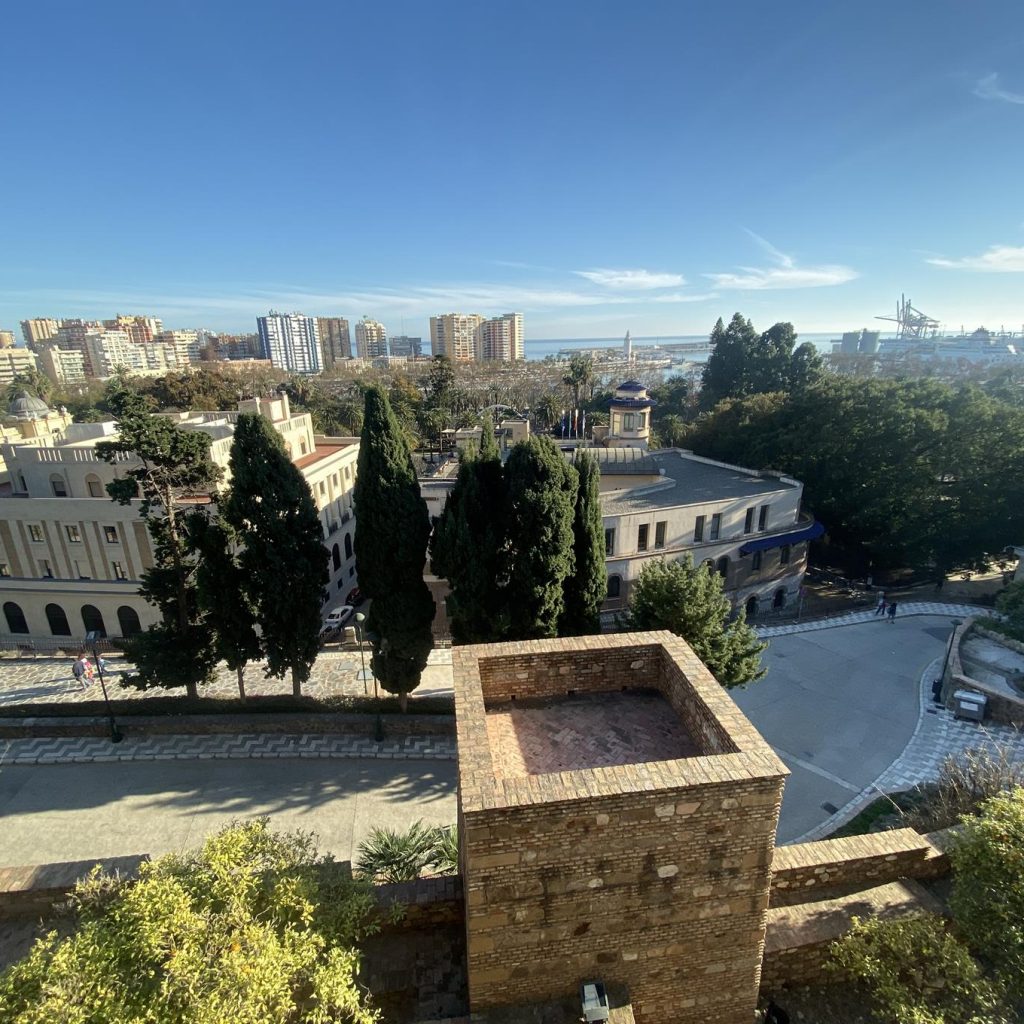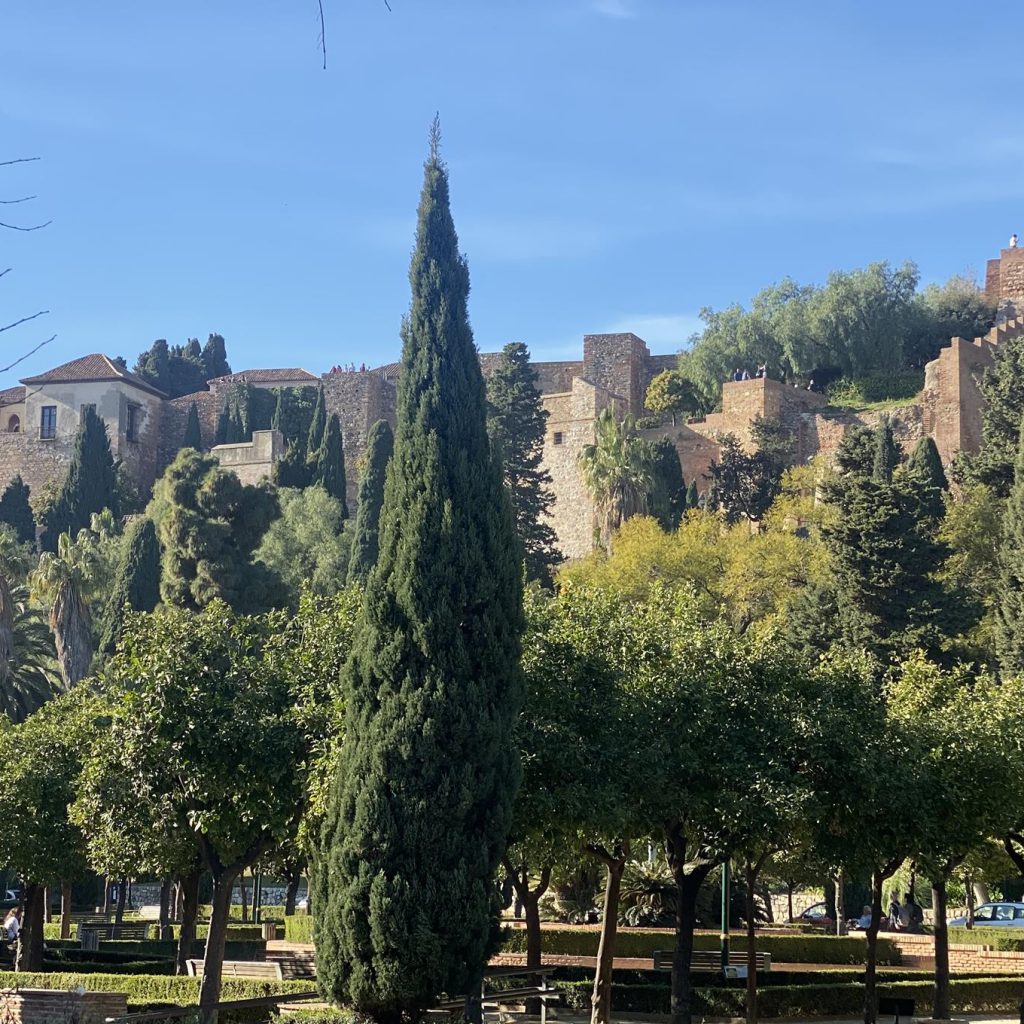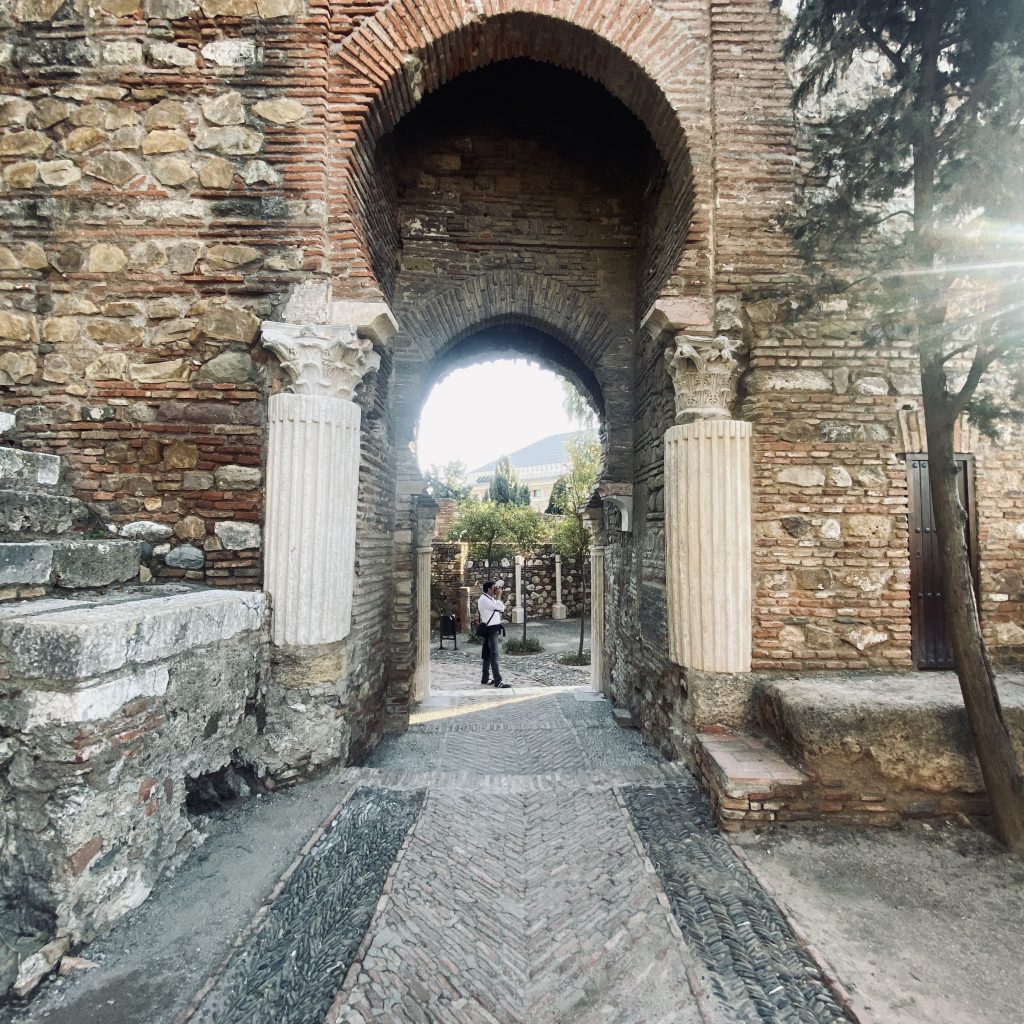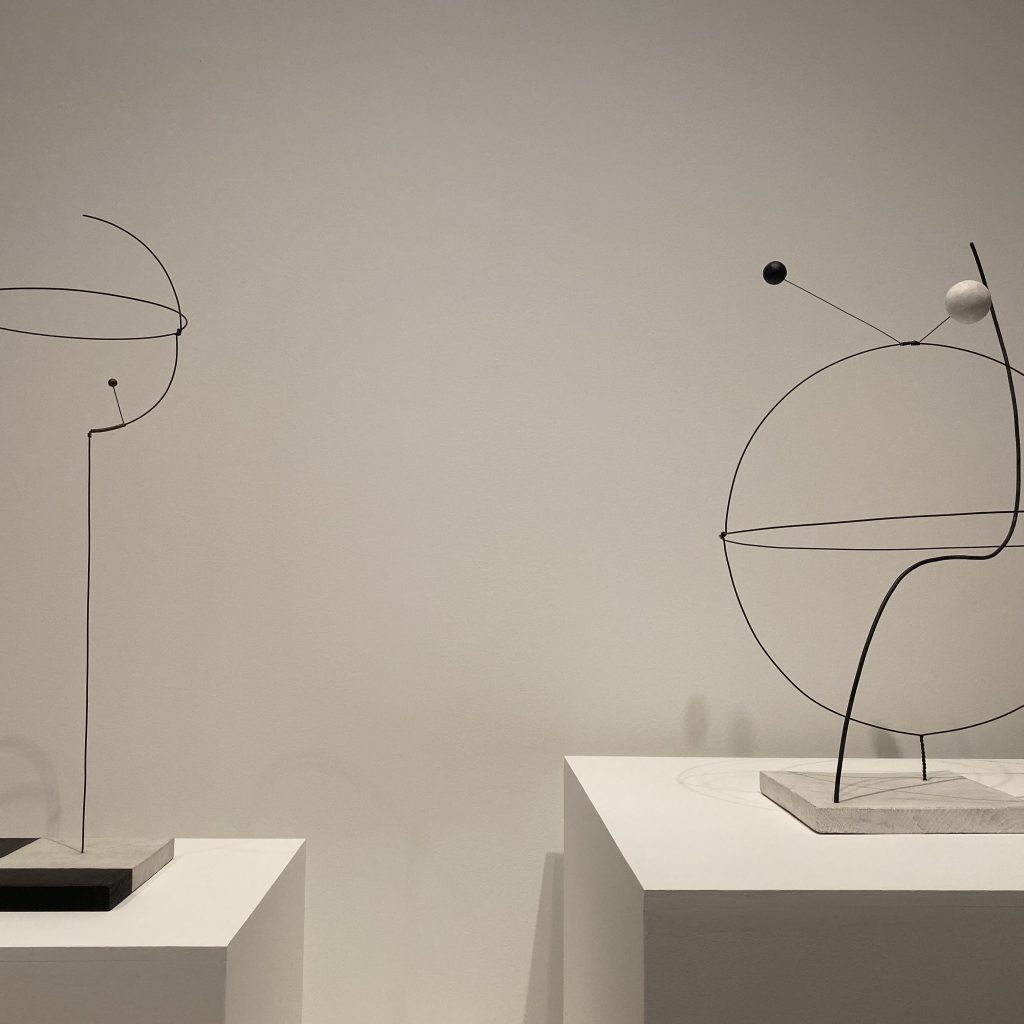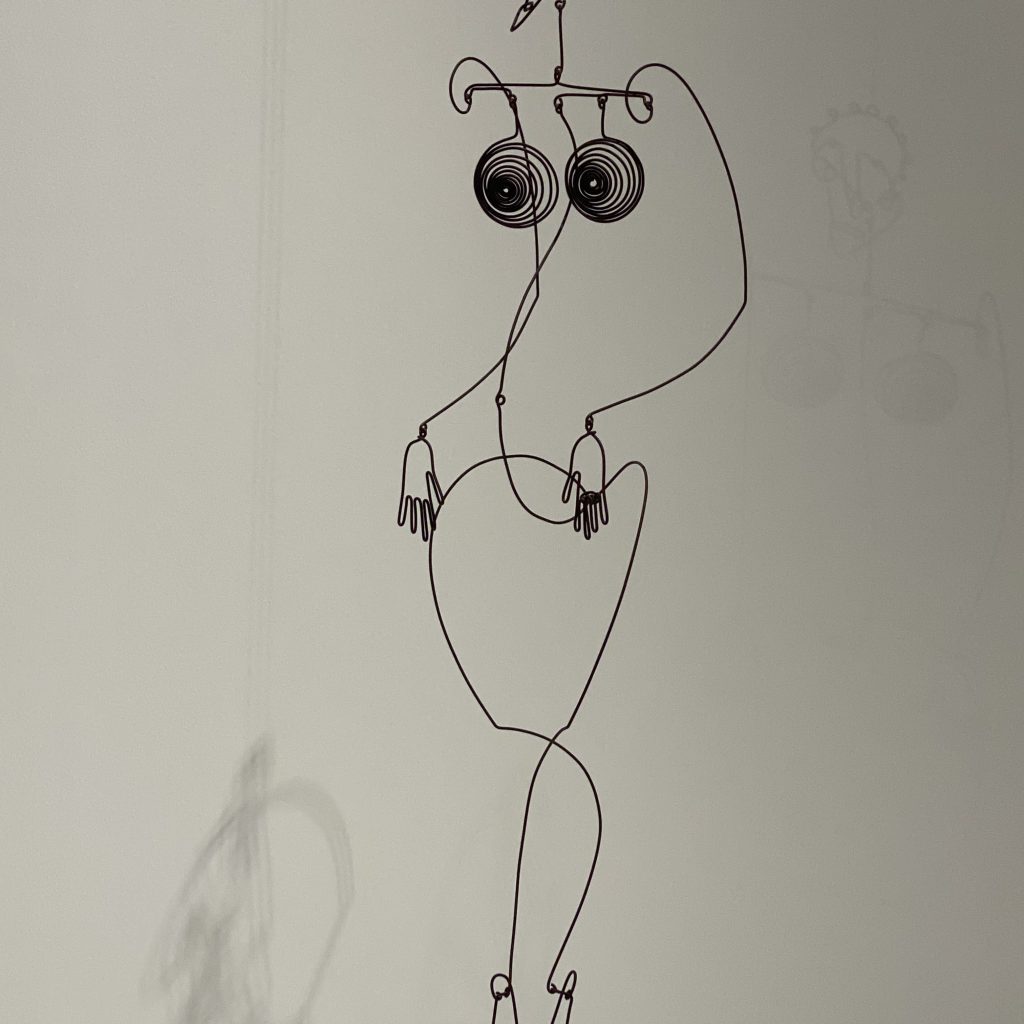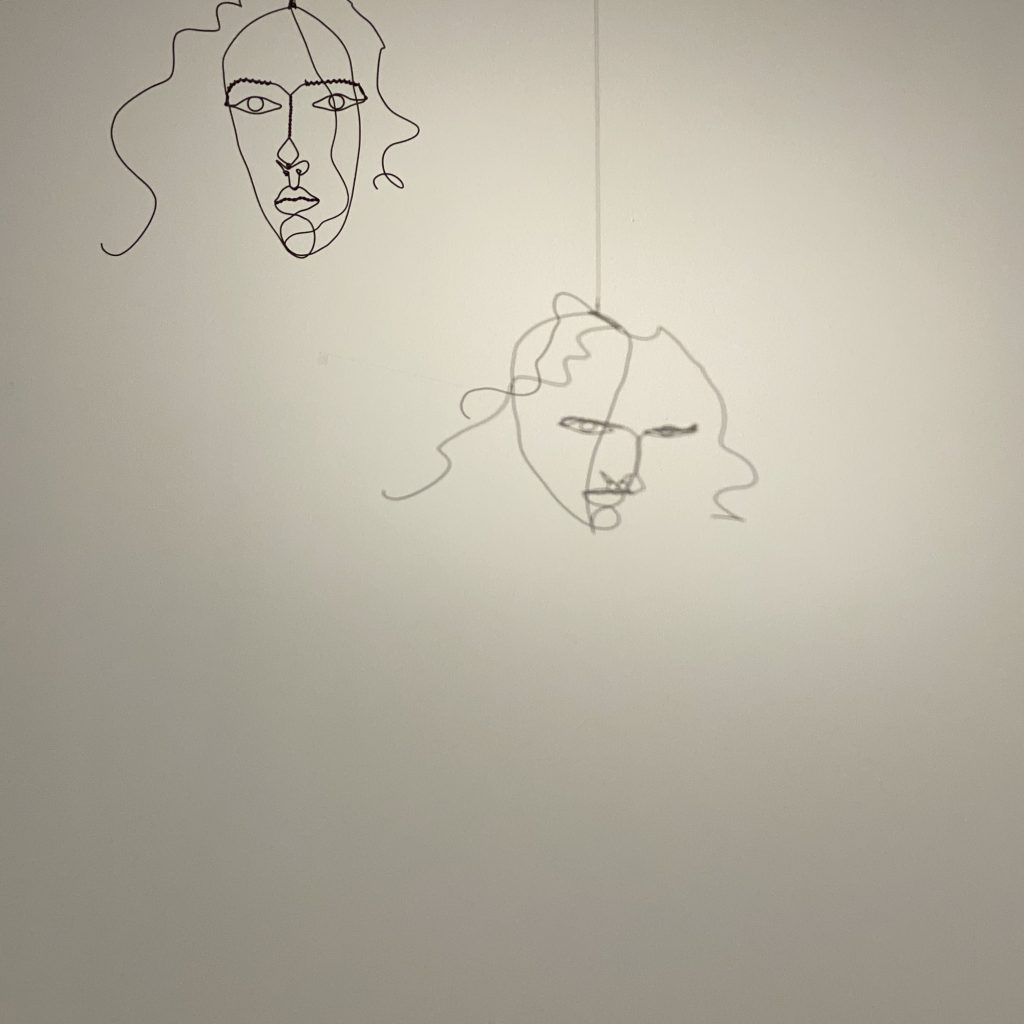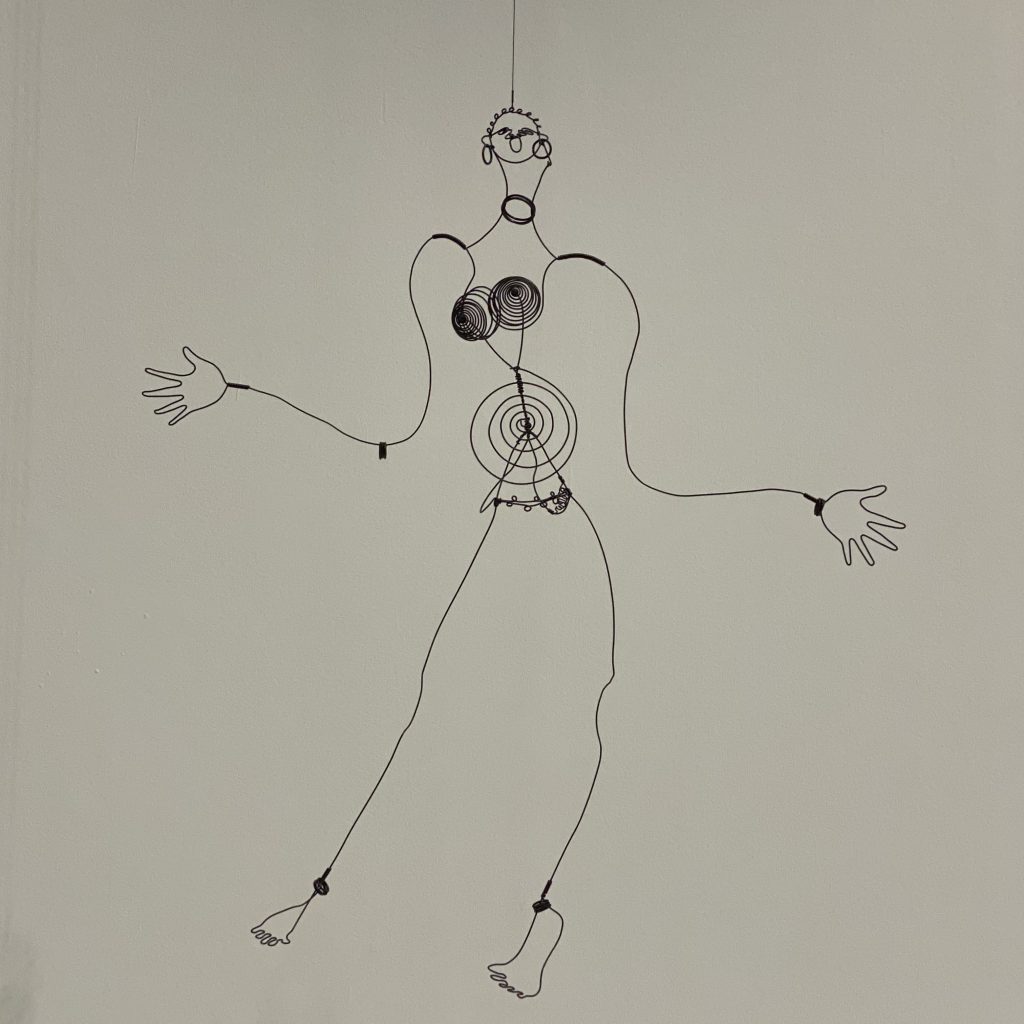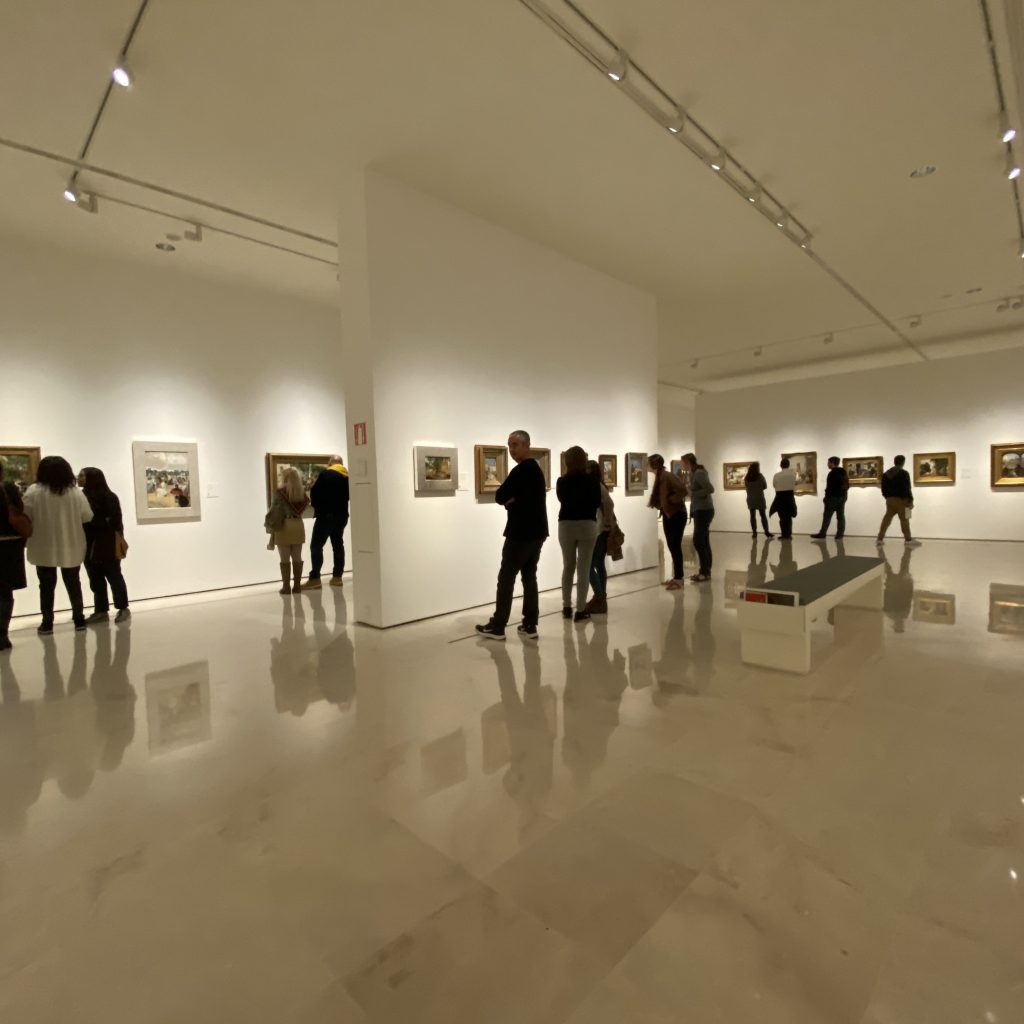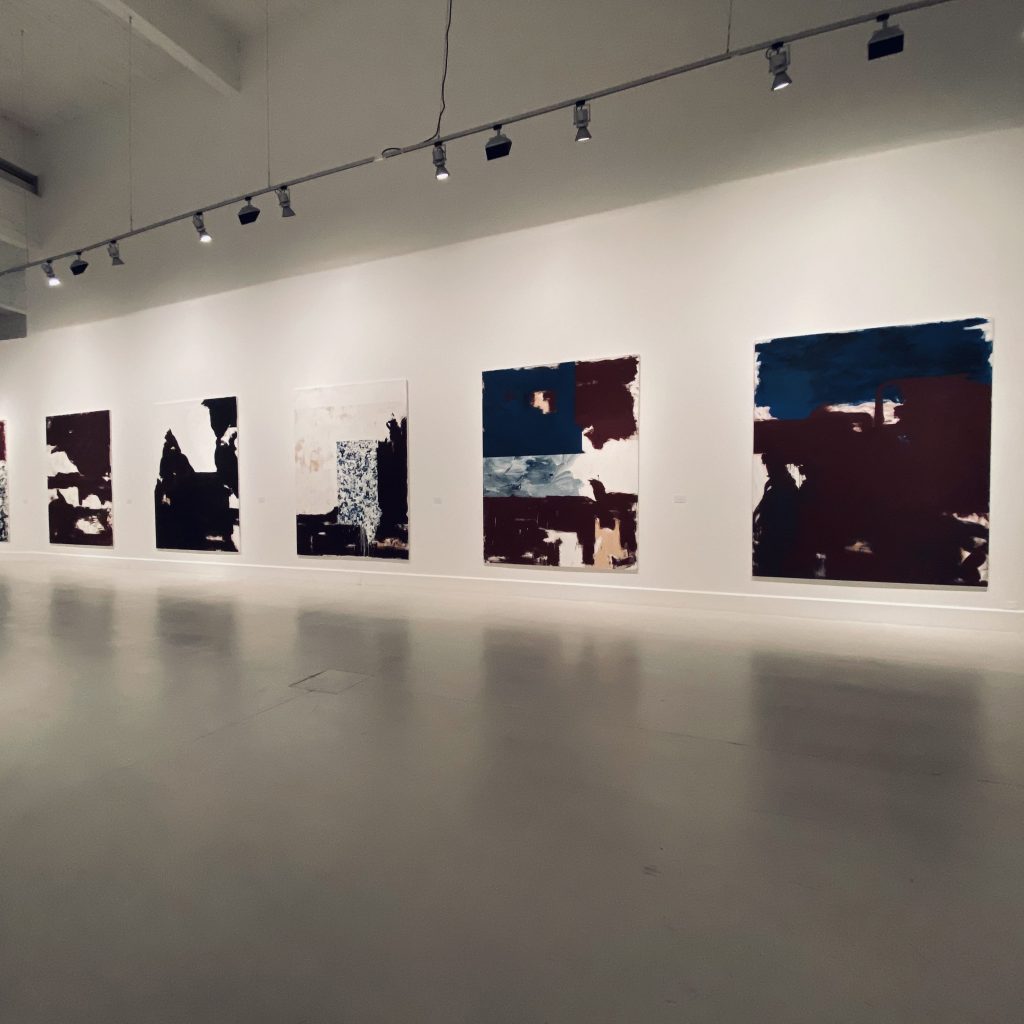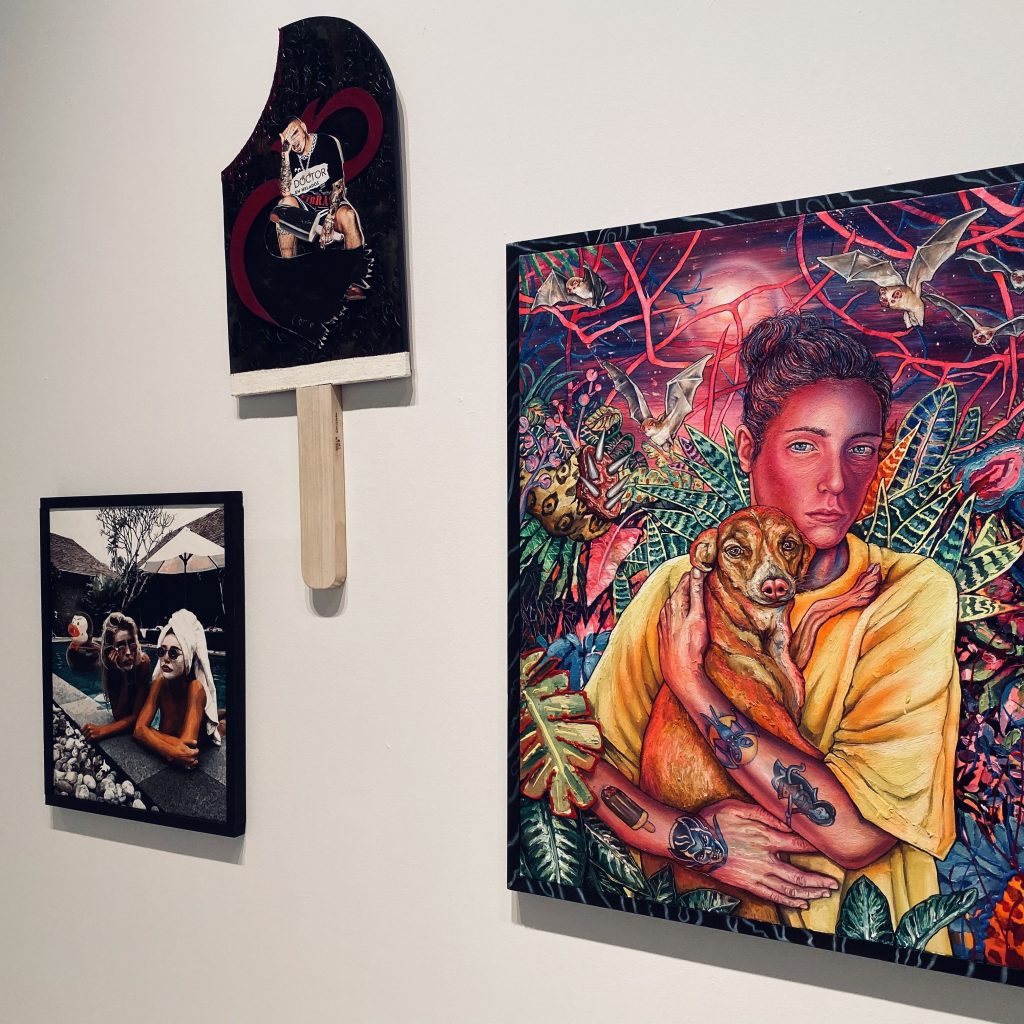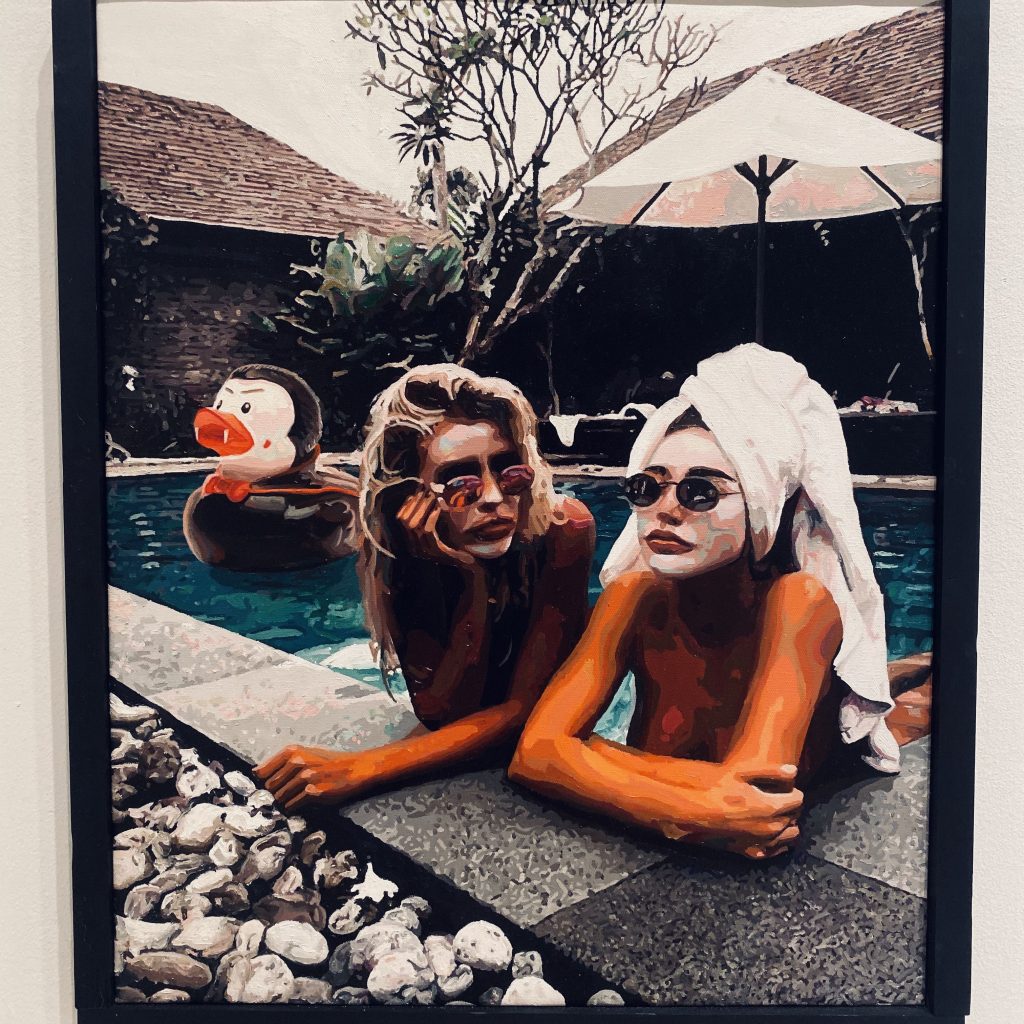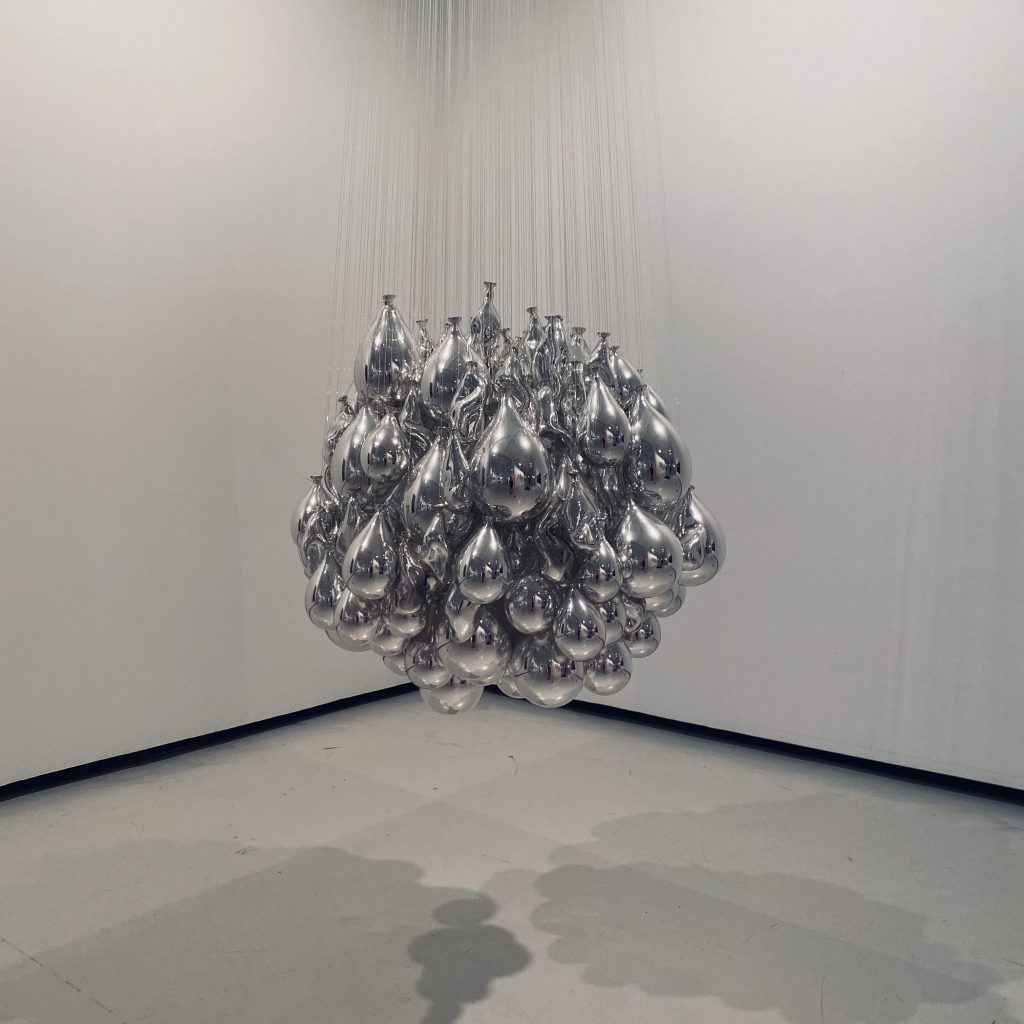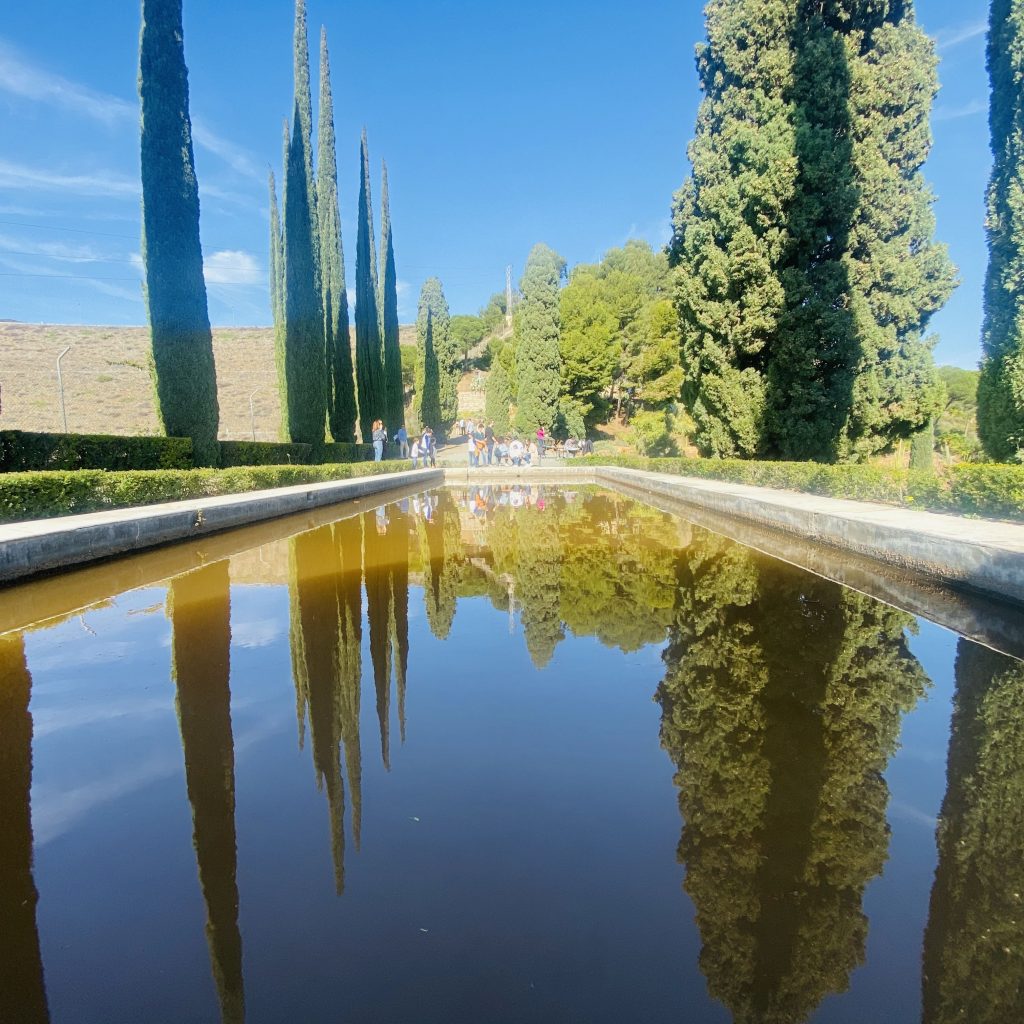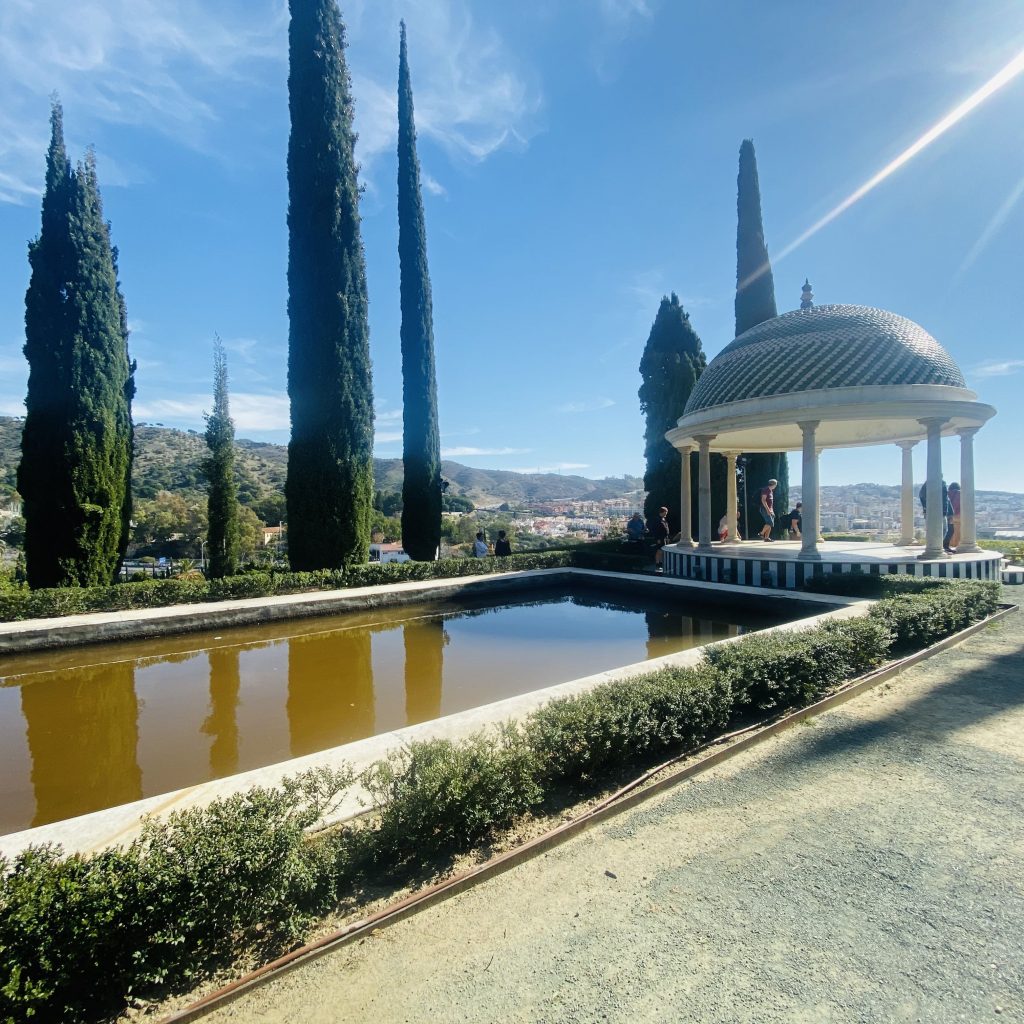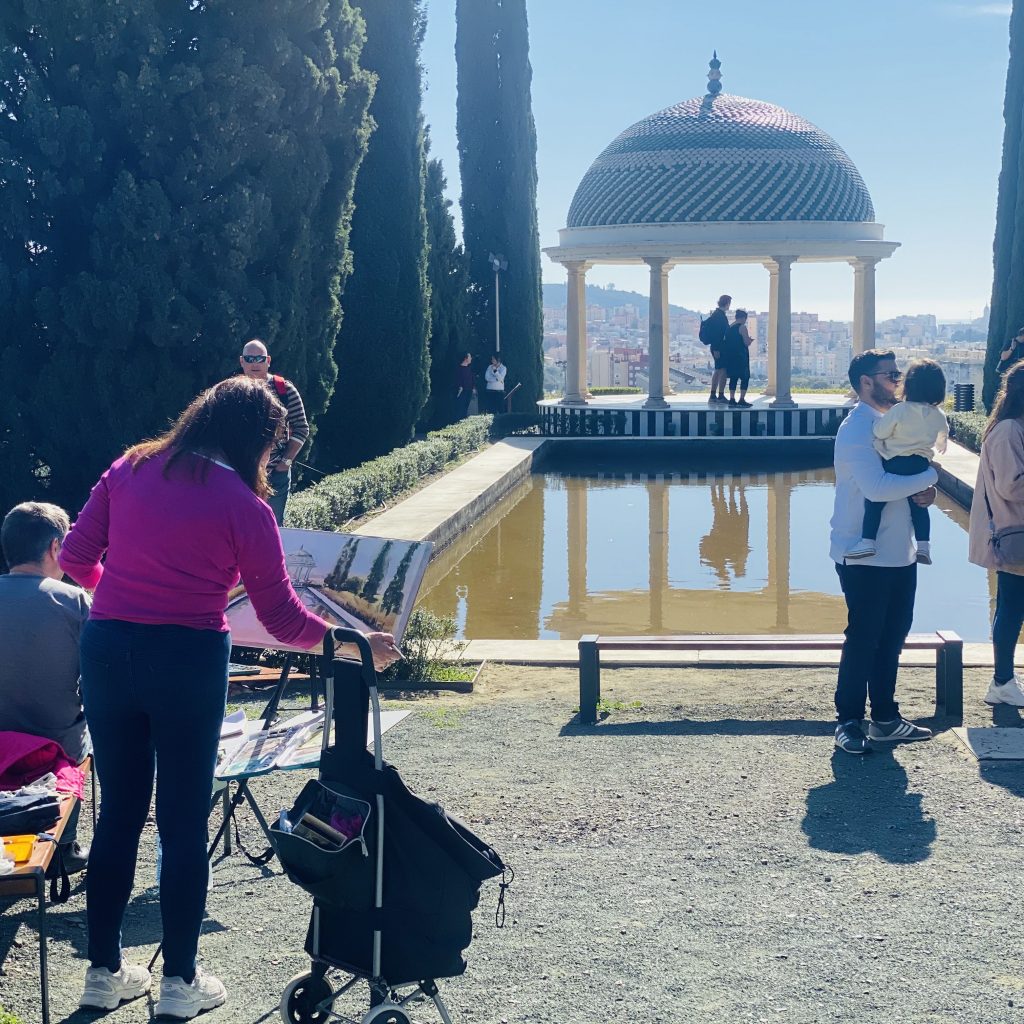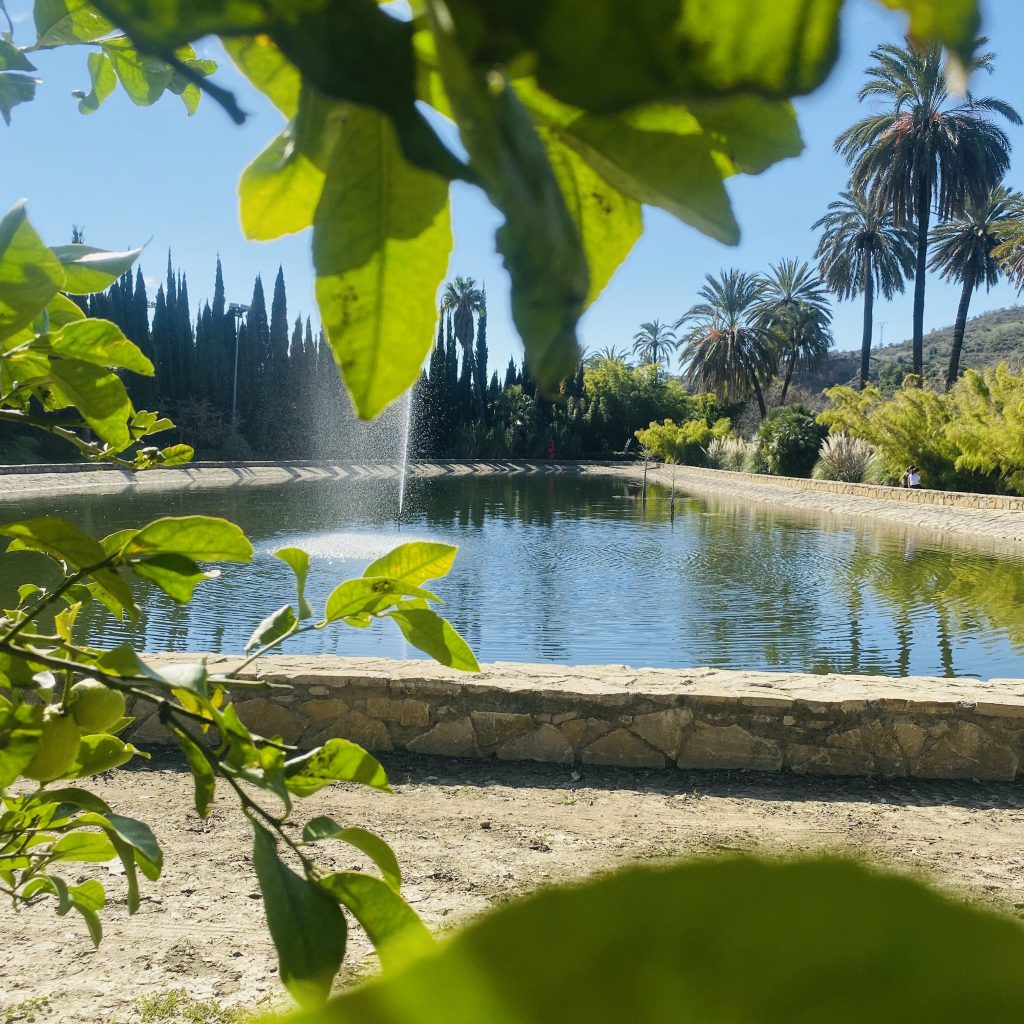
Leather handicraft straight from the workshop on four wheels
Wandering through Iberian lands
Which museums in Malaga offer free admission every Sunday and how to plan a perfect day not to miss anything – for fans of painting, contemporary art, history and archeology.
21/05/2020 1:04 PM
Not so long ago we took you on a trip to Malaga and talked about, among others, an aphrodisiac that was made of fermented fish guts. Today's article will also take us to this amazing city, but this time we will focus on art. Malaga has something to offer that every city should have - every Sunday most museums are free (some on Mondays)! Be sure to plan your stay in the center of Malaga on Sunday.
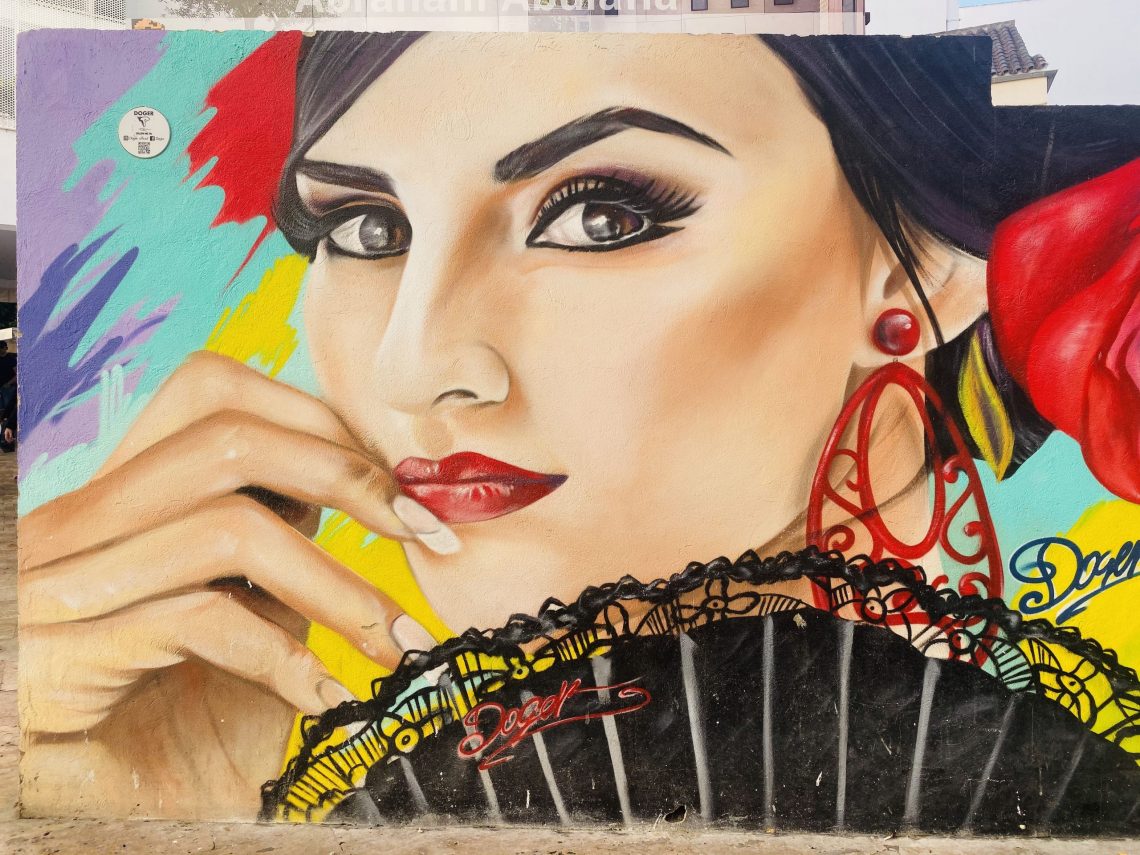
In this part we will talk about those museums that you can visit for free on Sunday and in the next part about a few others that really impressed us. In the winter months, you can easily visit almost all of the attractions listed below in one day. Unfortunately, in summer the botanical garden has different opening hours with free admisson and it may thwart our plans. At the end you will find the suggested order of visiting individual attractions arranged in such a way as to see as much as possible. . Remember to bring water with you - in the center a small bottle of water (0.5l) can cost up to 2.5 €. If you really want to see a lot, it is better to take a packed lunch to avoid wasting time eating out. In the evening, when the museums are closed, you can of course end your busy day with a good Spanish tapa and a cold beer or glass of wine.
You can start your Sunday in Malaga (about the history of the city you can read here) with a mass in the cathedral - then, of course, entry is free. Unfortunately, we’ve never managed to get inside so we have only seen this beautiful building from the outside. Santa Iglesia Catedral Basílica de la Encarnación or Holy Church The Cathedral The Basilica of the Incarnation, usually simply called the Cathedral of Malaga is one of the most important symbols of this city. The building was built on the site of a former mosque, which was first completely destroyed, so we will not see any remains of Arabic architecture. It is a Renaissance building with Baroque and Gothic elements. The north tower is 84 meters tall and it makes the cathedral the second tallest one in Andalusia, after Seville. The tower was never completed, therefore, the cathedral is sometimes referred to as "La Manquita" (diminutive of the word manco - one-armed).
If you want to go on a tour of the cathedral on a different day, and not just look at it briefly during the mass, a normal ticket will cost you 6 €. Opening hours are best consulted on the website.
Museo de Málaga
http://www.museosdeandalucia.es/web/museodemalaga
Free entry for EU citizens, the ticket costs 1.5 € for other nationalities. It is open from Monday to Friday from 9:00 to 21:00 and on Sunday until 15:00.
The Málaga Museum includes collections of the Museum of Fine Arts and the archaeological museum. It is the fifth largest museum in Spain and the largest in Andalusia. It is interesting that both of these museums had huge problems displaying their collections - both the Museum of Fine Arts and Archaeological changed their headquarters several times to finally become "homeless" in the 1990s. Finally, it was decided that the Málaga Museum would be created and located at the Customs Palace, a building built at the turn of the 18th and 19th centuries, that originally served passenger traffic at the port of Malaga. This building for the first time in history combines these outstanding collections, which from December 12, 2016 are finally available to visitors.
In my opinion, it is worth starting the tour from the second floor, from the archaeological part where we can trace the history of the city from the very beginning - from the Phoenicians, through the Romans to the Moors. There are a lot of interesting exhibits there, some of them have been moved from the botanical garden - amphoras, jewelry, mosaics. We can read about the garum, the Alcazaba fortress, the Gibralfaro castle, see maps that show where in the province there are the most interesting caves or megaliths.
On the first floor there is an exhibition of 19th-century painting, including Picasso's works.
Alcazaba and the castle of Gibralfaro
http://alcazabaygibralfaro.malaga.eu/es/
From November to March, the castle and fortress are open from 9:00 to 18:00 while in the summer until 20:00 - free admission is available every Sunday from 14:00 to the closing, normally you would pay € 5.50 for both monuments (2,50 € reduced price)
The road to the castle is quite steep and although the walk is not long, it will take you about 20-30 minutes, I have to admit that it is quite exhausting. After the visit we descend from the castle directly to the Alcazaba fortress.
Gibralfaro Castle is located on the hill 132m. above sea level. There is a beautiful view from there and it is the main reason why it’s worth climbing to the top - to look at Malaga, the port and the cathedral from above. From there it’s been always possible not only to observe what was happening down but also to spot the dangers that could reach the city by land and sea.
Gibralfaro Castle was built in the fourteenth century by the ruler of the emirate of Grenada to defend the fortress of Alcazaba, which is located below and with which it is connected by a passage. It became the most difficult fortress to conquer in all of Al-Andalus (that was the name of the Iberian Peninsula in the Moorish times). The name of the hill comes from the Arabic word which means a mountain (the same as it is with Gibraltar) and the Greek word for lighthouse, which may indicate that the hill once served as a navigation point. Remains of Phoenician and Roman times and of fortifications of the 13th century were also found there. In 1487, Malaga was conquered by the Spaniards and the castle was transformed into the residence of the Catholic Monarchs - Ferdinand and Isabella. It played a military role until 1925. From the "visitors" point of view, there is not much there but you can have a nice walk through the walls of the castle with a great view. There is also an attraction for the younger ones - there are incredibly many squirrels up there! There is also an interesting collection of posters from which we can learn curiosities about the local flora and its history - e.g. where almonds, carob, oranges and many other species of trees came from.
After visiting the castle, go down the same road to the Alcazaba fortress (from the Arabic - citadel). If you want to visit the Malaga museum, you must go straight there as it closes at 3 pm buut the suggested order of visiting is described at the end of this entry.
Alcazaba is a castle built during the Moorish reign, on the site of ancient Phoenician and Roman fortifications. The place was chosen because of its strategic location (located above the city). Already in the eighth century, the first Alcazaba was created with a mosuqe inside, which served as the city's main mosque until the construction of a new one in the 9th century. From the eleventh century, the Alcazaba was expanded. Like the Gibralfaro Castle, after 1497 the fortress was in the hands of Catholic Monarchs, and over the centuries it had various functions, from the 18th century even civilians lived there. Restoration work began in 1933.
Leaving the Alcazaba, we'll turn right for a moment to see the Teatro Romano or Roman Theater, built in the first century BC, served its function for over 200 years. Later, there was a cemetery there for some time. In Moorish times, some columns and carved stones were dismantled to be used to build the Alcazaba fortress adjacent to the theater. The theater itself was not really discovered until 1951! Just next to it there is a modern, interactive Visitor Center, which in an interesting way allows you to learn about the history of this place and the life and customs of ancient times. It is free and open on weekdays from 10:00 to 18:00 and on Sunday until 16:00. It is worth hurrying to be able to get there before closing time. The Roman Theater and Alcazaba are beautifully lit in the evening and look great, so after dark it is worth going for a short walk there.
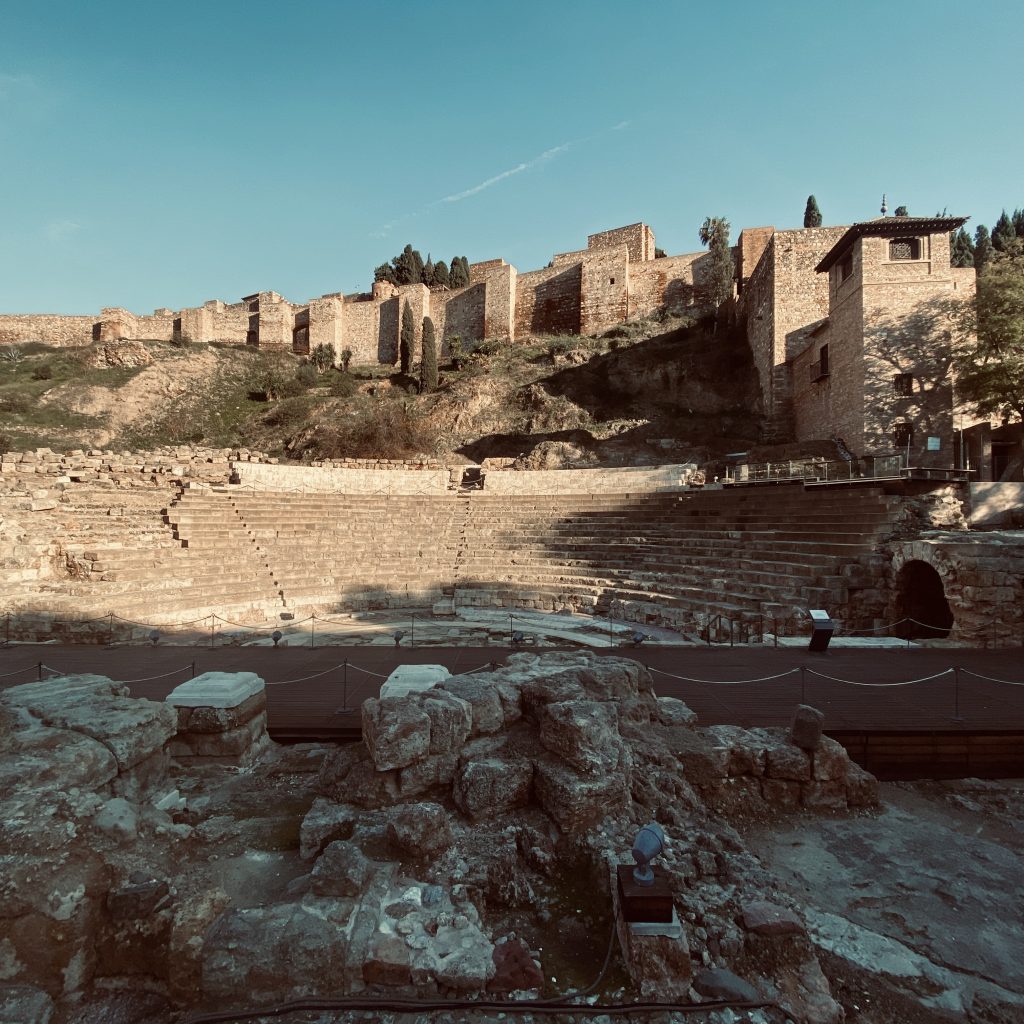
Museo del Patrimonio Municipal (MUPAM)
https://museodelpatrimoniomunicipal.malaga.eu/
The City Museum (The Museum of the City Heritage to be exact) is unfortunately often skipped on the list of recommended attractions in Malaga, which is a pity. It is open every day except Monday from 10:00 to 20:00 (always free admission) and it is worth visiting at least for a while. It is a museum of art and history designed by Federico Orellan Ortega and opened in 2007. In my opinion, the most interesting is the last floor with contemporary painting.
Centro Pompidou de Málaga
https://centrepompidou-malaga.eu/
This is the first international branch of the National Center for Culture and Arts Georges Pompidou, which headquarters is located in France. The Museum in Malaga was inaugurated on March 28, 2015. Open daily except Tuesday from 9:30 to 20:00. We will pay € 9 for admission, unless we go there on Sunday after 16:00.
This is definitely one of my favorite museums, even the building itself is incredibly interesting. In the years 2017-2020 the permanent exhibition was called "Utopías modernas" (Contemporary Utopias) but it was changed in February this year and the next one I haven't seen yet. In 2019, a few Polish accents surprised me, e.g. a short film in Polish directed by Yael Bartana "The Wall and the Tower" or Adam Adach's painting "The Last Summer".
In the museum store, which we have to go through to get to the exit, you can get quite a lot of good books.
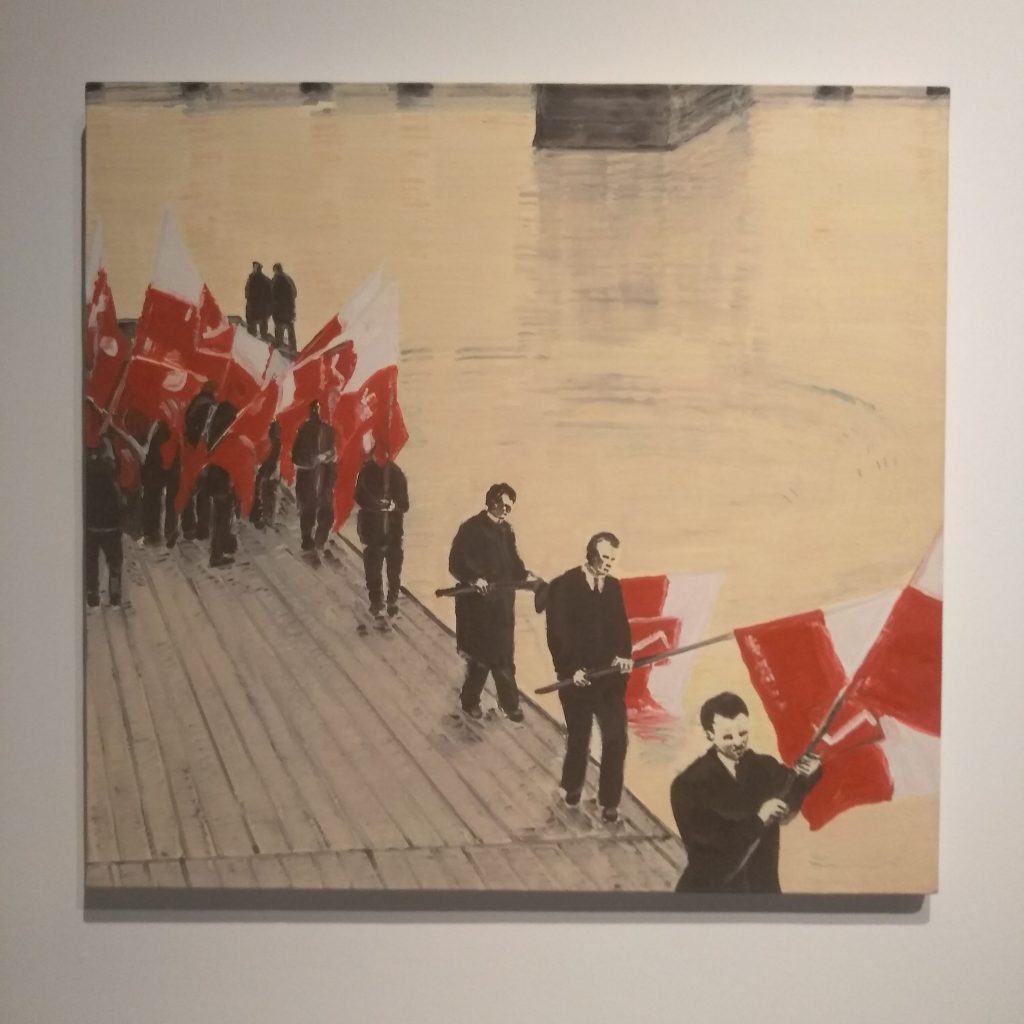
Adama Adach „Last Summer" 

One of the installations from the permanent exhibition 2017-2020 
The museum from the outside
Museo Picasso
https://www.museopicassomalaga.org/
Pablo Picasoo does not need to be introduced, but I will tell a secret – we are planning a new series of articles! We would like to introduce you to some important Spanish characters - artists, painters, film directors and Pablo is at the forefront next to Salvador Dalí. So stay tuned not to miss an article about him!
The museum is open daily from 10:00 to 18:00, 19:00 or 20:00 depending on the season. Admission to the permanent exhibition normally costs € 9 and for permanent and temporary € 12. You can enter the museum for free on Sunday two hours before closing time, so from March to June and from September to October from 17:00 to 19:00, in the strict summer season so in July and August from 18:00 to 20:00, and in strictly winter months from November to February from 16:00 to 18:00. It is one of the two museums to which there is always a queue. In my experience, you usually wait around 20-30 minutes, but I've never been there in the summer.
The museum is located in a beautiful building, the Buenavista Palace – an interesting fact is that it was here, where at the beginning of the 20th century the collections of the Museum of Fine Arts were exhibited but they moved out in 1997 to make room for the Picasso Museum. From then on, these collections could not be viewed until 2016 when, together with those of the Archaeological Museum, they were made available at the Customs Palace, which I wrote about earlier.

Museum of Picasso is one of Malaga's must-see attractions. What can you see there? Of course the works of Pablo Picasso arranged in such a way that you can observe the development of the artist and his works, from an early age. I would even risk saying that we are watching how he learned to paint. Temporary exhibitions are also directly related to him - I had the opportunity to be on three. One was dedicated to his first wife Olga Khokhlova (Picasso), another to the work of Bruce Nauman under the title "Estancias, cuerpos, palabras" ("Being, flesh, words") which I liked least of all. Earlier this year I was able to see the Calder-Picasso exhibition – over a 100 works, results of the collaboration of these two amazing artists of the 20th century - American Alexander Calder and Malaga-born Pablo Picasso. The whole exhibition was dedicated to ... emptiness and lack of space.
Permanent and temporary exhibitions are free on Sunday during the hours I mentioned earlier. It is not allowed to take photos or film only at the permanent exhibition. This is an indisputably obligatory point on the program, above all for Picasso fans.
Carmen Thyssen Museum
https://www.carmenthyssenmalaga.org/
It is a huge museum focusing primarily on the nineteenth century and Andalusian painting. Open daily, except Monday, from 10:00 to 20:00, entry 10€. Free admission on Sunday after 17:00. Here the queue is the longest, one time I had to wait 45 minutes out of season (in February).
The paintings are located on several floors, the last one always has a temporary exhibition. I like the fact that the museum is modern enough that every painting, apart from the traditional label with the author and title, also has a QR code that we can scan with a mobile phone and we will be transferred directly to the appropriate subpage of the official museum website. There we can read everything that interests us.
In my opinion, it is also, next to the Picasso Museum, a must-see attraction. However I do not recommend it to anyone who is not interested in painting because then you can find it terribly boring and consider the visit a waste of time.
Birth House of Picasso - Fundación Picasso Málaga, Casa Natal
https://fundacionpicasso.malaga.eu/
Open daily from 9:30 to 20:00, admission 3 € (permanent exhibition), 4 € (permanent and temporary exhibition). Free admission after 16:00. It is a tiny museum located in the house where Picasso was born and to be honest I recommend it only to people who are passionate about the life of Pablo Picasso, not even his work. The museum is distant from the others and therefore you will rather have to give up something else to get there and, frankly, it is not worth it.
Museum of Contemporary Art - Centro de Arte Contemporáneo de Málaga (CAC)
http://cacmalaga.eu/
Open Tuesday to Sunday from 9:00 to 21:30, admission free. The museum, as the name implies, of contemporary art - we can admire paintings, sculptures, photographs and various installations. The museum is located in the district called Soho, which itself is an art gallery - amazing graffiti decorate most of the buildings so it's worth taking a walk around the streets adjacent to the CAC museum before we decide to enter.
Botanical and historical garden: La Concepción (Jardín Botánico Histórico)
Normally € 5.20 (reduced € 3.10) for entry, but on Sunday admission is free:
From October 1 to March 31 from 9:30 to 16:30
From April 1 to September 30 between 15:30 and 19:30.
http://laconcepcion.malaga.eu/
The botanical garden is located outside the city center, to get there on foot you need to spend about 1.5 hours and the route usually leads uphill. It is better to go there by bus or car. The garden is really a great place to spend a Sunday afternoon or morning.
La Concepción is a botanical garden that was founded by the Loring family, a very influential couple in the 19th century in Malaga. They came up with the idea of creating such a garden by visiting numerous villas, palaces and parks during their honeymoon trip around Europe. This place, however, is not known only from the beautiful garden, but from the magnificent collection of archaeological remains gathered around the Loring Museum - among others, the temple in the Doric style, which was built in 1859 on the discovered Roman mosaic.
In 1911, La Concepción was sold to Rafael and Amalia Echevarría, who expanded the garden with both new areas and trees. Modern sculptures have also appeared in the park. In 1943, the garden was officially declared a historical – artistic garden. After the death of the owners, La Concepción passed into the hands of Amalia's brother Horacio Echevarriety, who kept it in perfect condition until 1963, when he died. Since then, the property fell into ruin. In 1990 it was acquired by the City Council of Malaga for 600 million pesetas (EUR 3 606 073). After renovations, the garden was opened to visitors in 1994.
Suggested sightseeing order
How to plan your day so you don't miss anything and see what Malaga has to offer? Cheap airline tickets can be obtained all year round and the weather is really pleasant, even in winter. Maybe it’s not really possible to swim in the sea or sunbathe but you can still go sightseeing wearing a short sleeve shirt. Why am I saying this? Because in winter, Malaga is obviously less crowded, queues are shorter and opening hours of some museums more "favorable". So if you came between October and March I recommend this route:
- Botanical garden – you can get there by bus or by car, preferably before noon, around 10:00 so that after a pleasant walk around the park you can get to the city center around noon
- This way, you can start the tour from the Museum of Málaga. Around 13:30 you have to start walking towards the castle of Gibralfaro
- Going up the hill takes half an hour so around 14:00, when the admission is free, you arrive to the Castle of Gibralfaro. A walk around the castle and then back down always takes me not more than 45 minutes
- We go to the Alcazaba fortress and the Roman Theater. Around 15:30 we go to the next point of the program - Museum del Patrimonio Municipal.
- A visit to the city museum doesn’t take much time and just around 16:00 you reach the center of Pompidou. The time you need to spend there depends on the exhibition which is available but at 17:00, you can easily reach the Picasso Museum
- You have to be ready to wait in a longer queue at the Picasso Museum so in the winter months it is better not to come later than at 17:15 to be sure that they will not close the doors in your faces
- Then we go to the Carmen Thyssen Museum. There is also a queue there, sometimes up to 45 minutes of waiting. Try not to get here after 19:00
- If you manage to leave the Carmen Thyssen museum early enough and you are an outstanding admirer of Pablo Picasso, you can go to his birth home, Fundación Picasso. They close at 20:00 and the walk takes about 10 minutes
- The last point is the museum of modern art or the so-called CAC in the Soho district. Because you will be there in the evening you will not have the opportunity to admire the graffiti that decorates the surrounding buildings but the museum closes at 21:30 so you will definitely be able to visit it.
This route is very tiring - there is no time for a full meal during the day, only a sandwich eaten on the run and you walk around 6-10km - so be prepared, wear comfortable shoes, don’t forget to take water and some food with you.
If you come in the summer you have to give up the botanical garden because it offers the free entry after 15:30 so it just doesn’t go well with everything else. You can either pay for admission, go there next Sunday or just omit it and leave the visit for the next time. The Picasso Museum, on the other hand, in the summer months is open from 18:00 not from 17:00 so it's better to go first to Carmen Thyssen.
Also remember that in high season, in July and August, queues may be longer. If you see that you have to wait everywhere, decide which of these attractions interest you most and just give up the others. Subjectively - CAC is my favorite museum in Málaga (but to visit it you don't have to give up anything because they close really late), I would put Picasso museum in second and Carmen Thyssen in third. Because I like contemporary art, I personally would not give up Pompoidou, but I could omit Alcazaba, the city museum and the Picasso birth house. When it comes to history and archeology, definitely the most important is the Malaga Museum and it is worth going to the Gibralfaro Castle because of the views.
About things you can see and visit around the city of Malaga ou can read here - Walk along the King’s (Little) Path and among the limestone rocks of the El Torcal de Antequera natural reserve – where you can go from Malaga for one day trips. And here you can read about other museums, also available free of charge.

